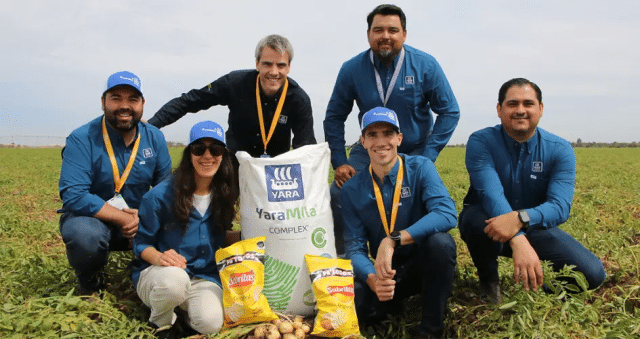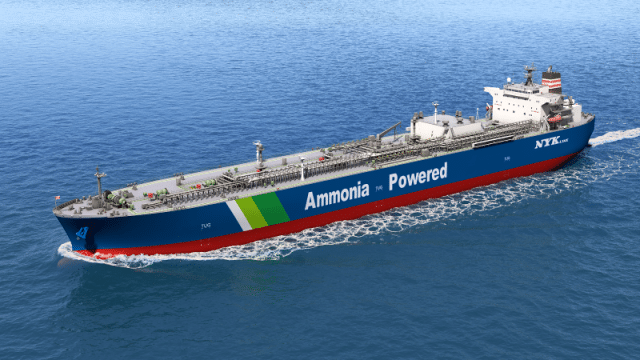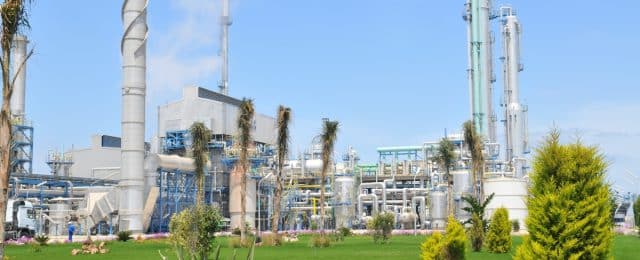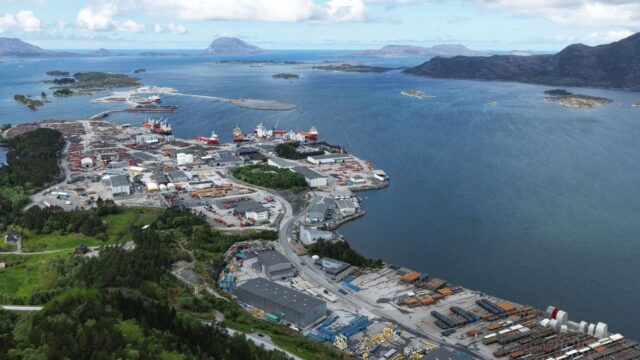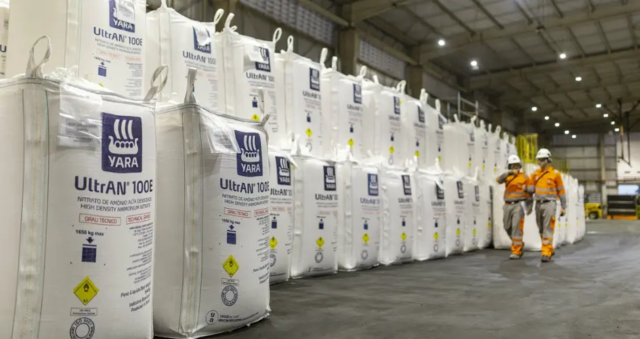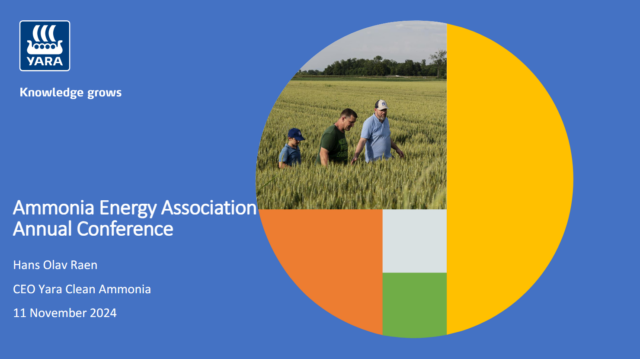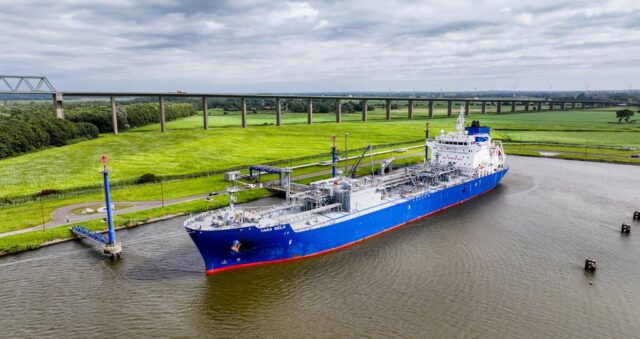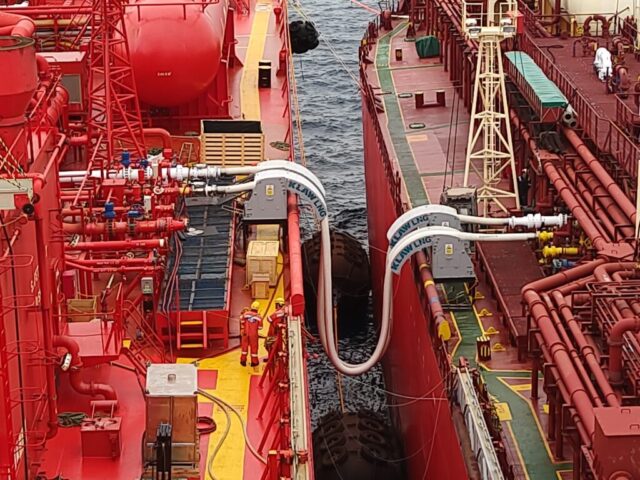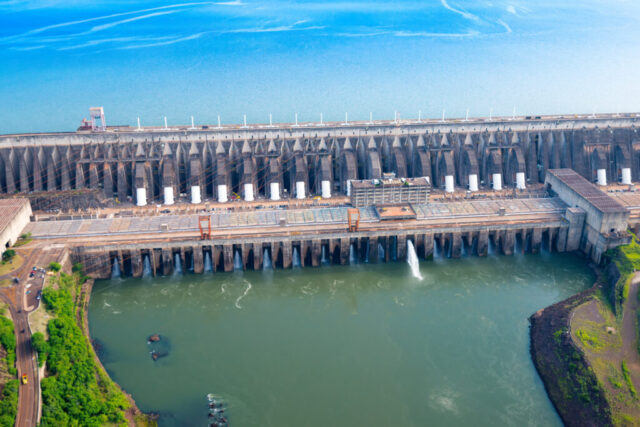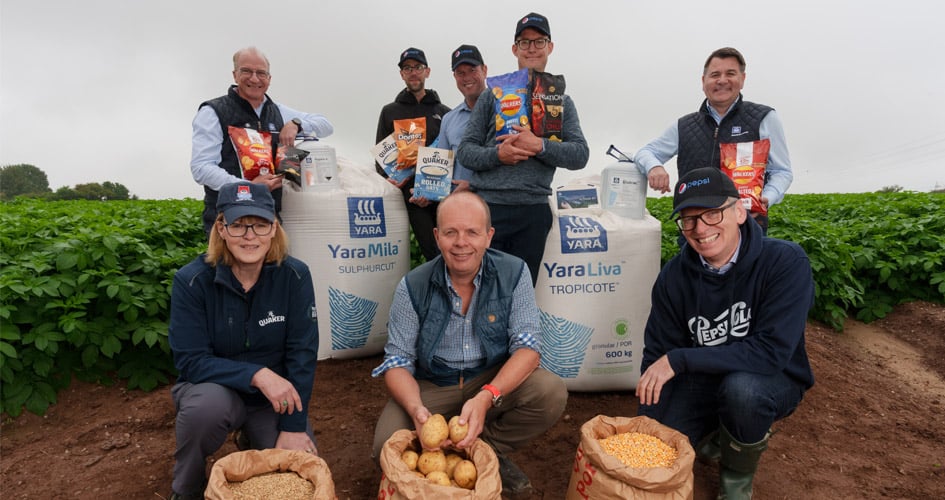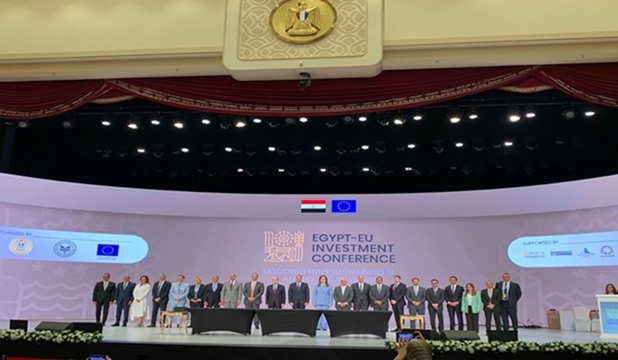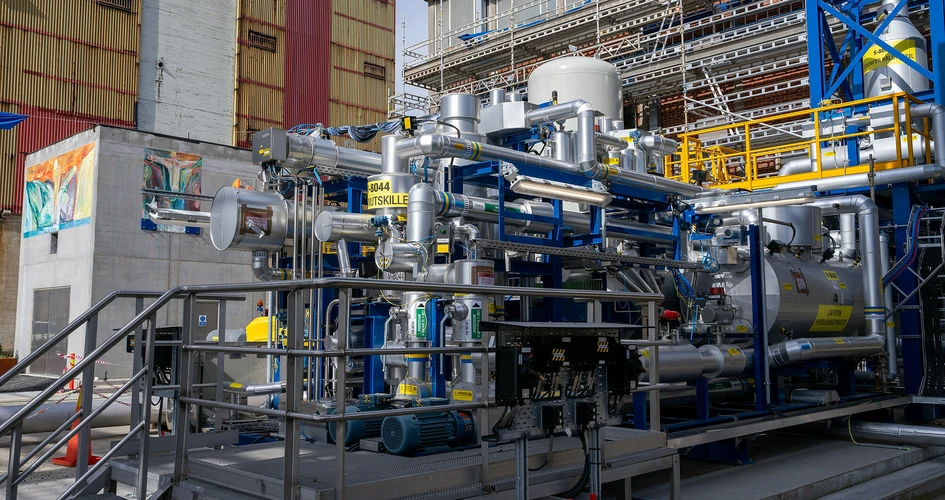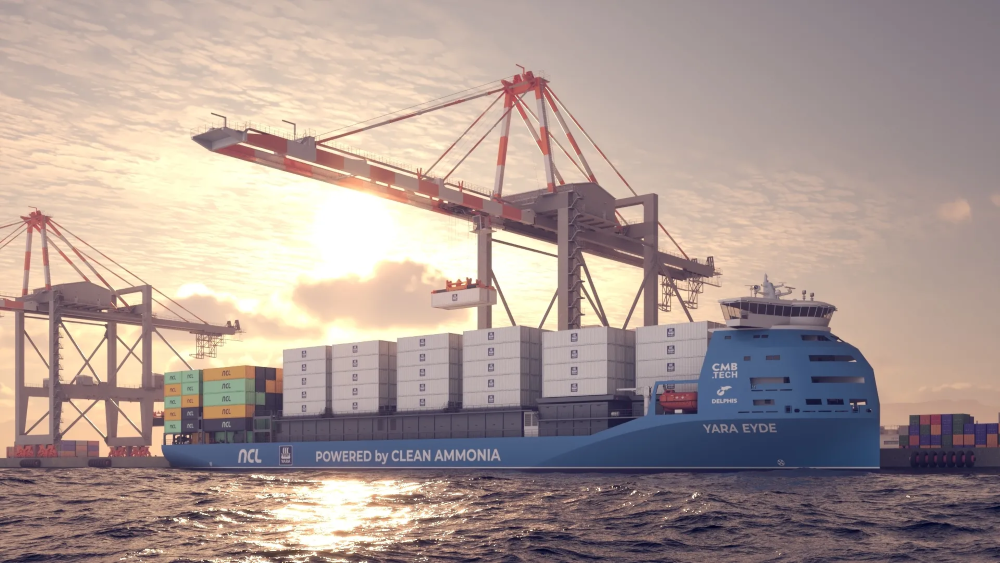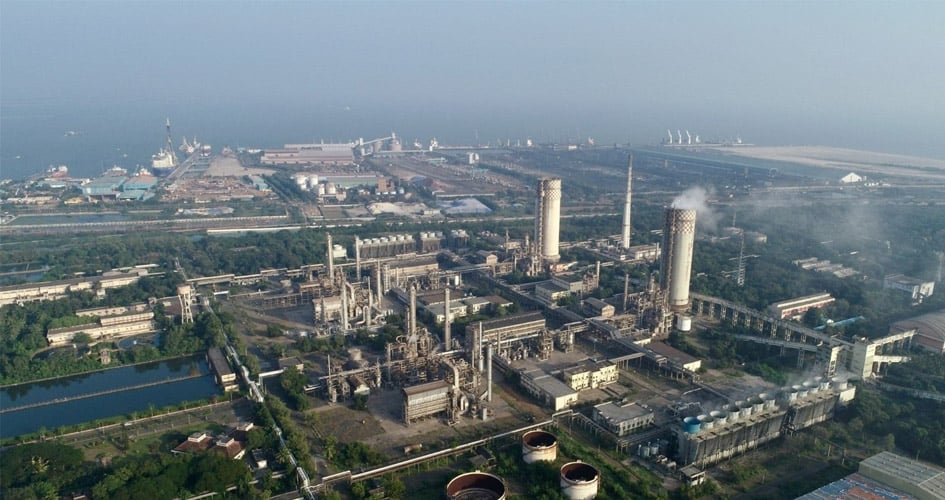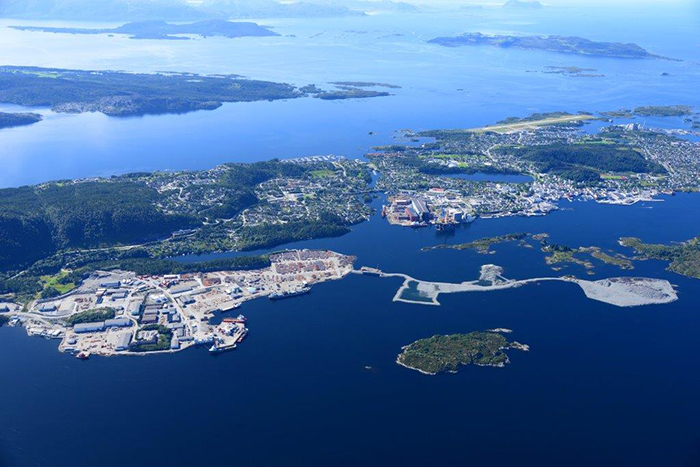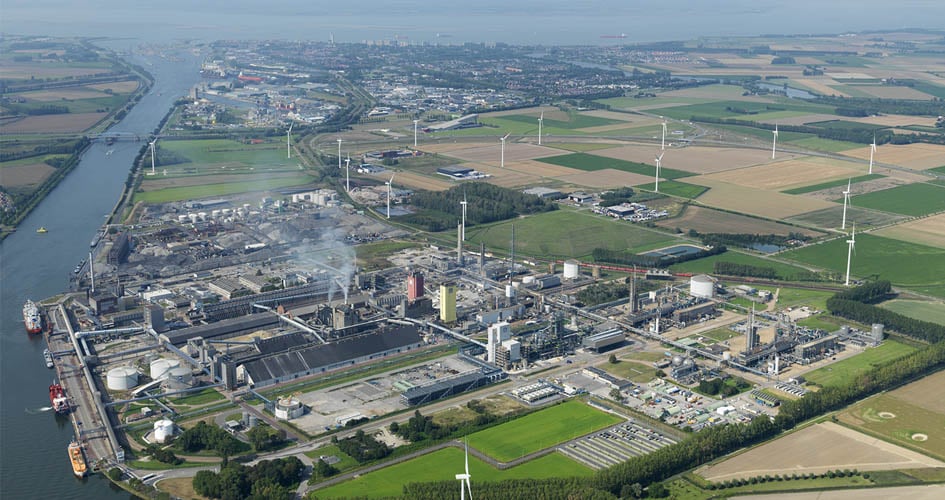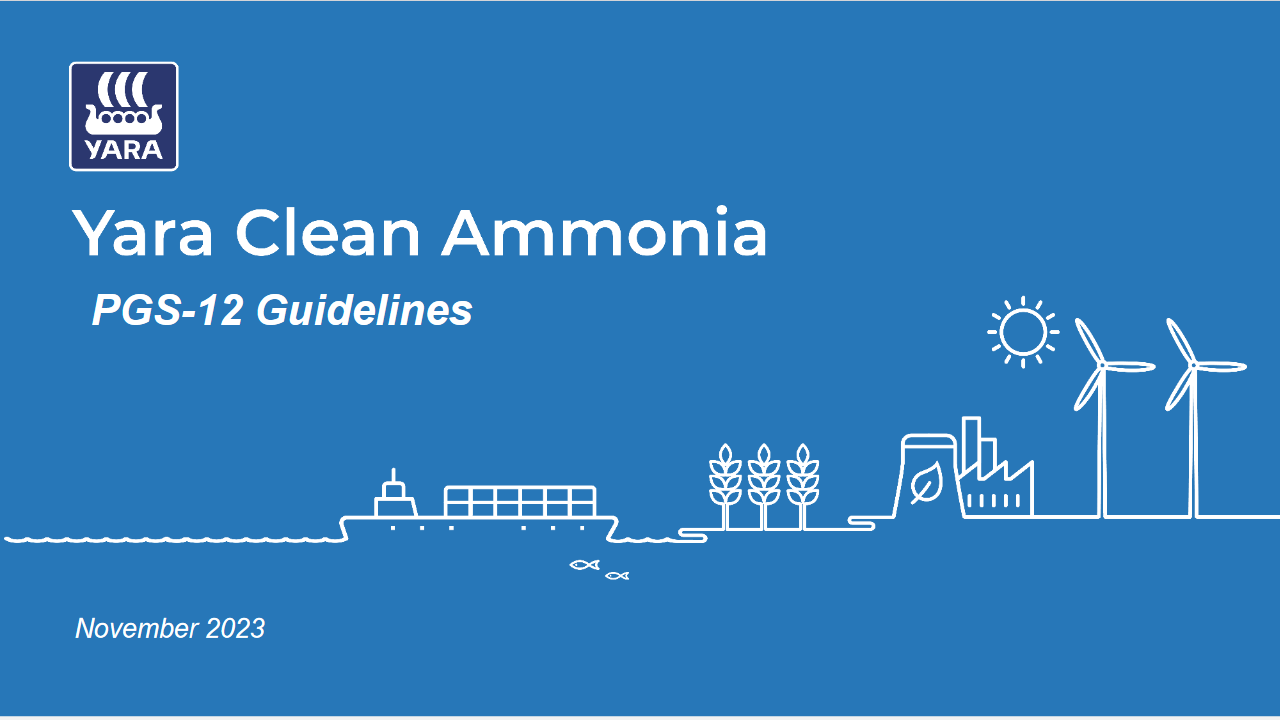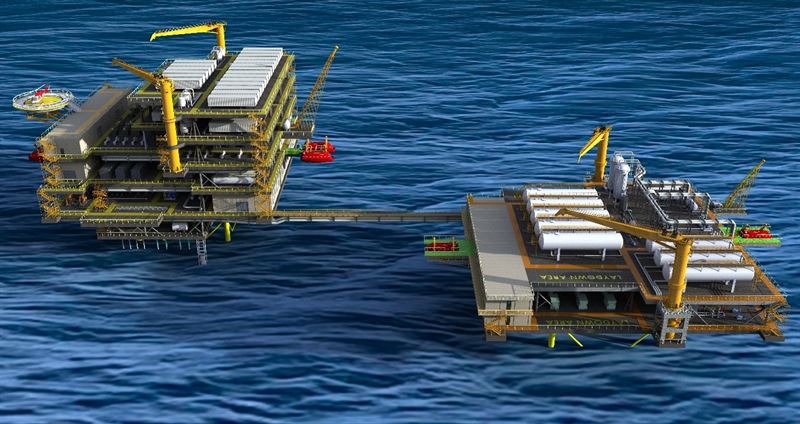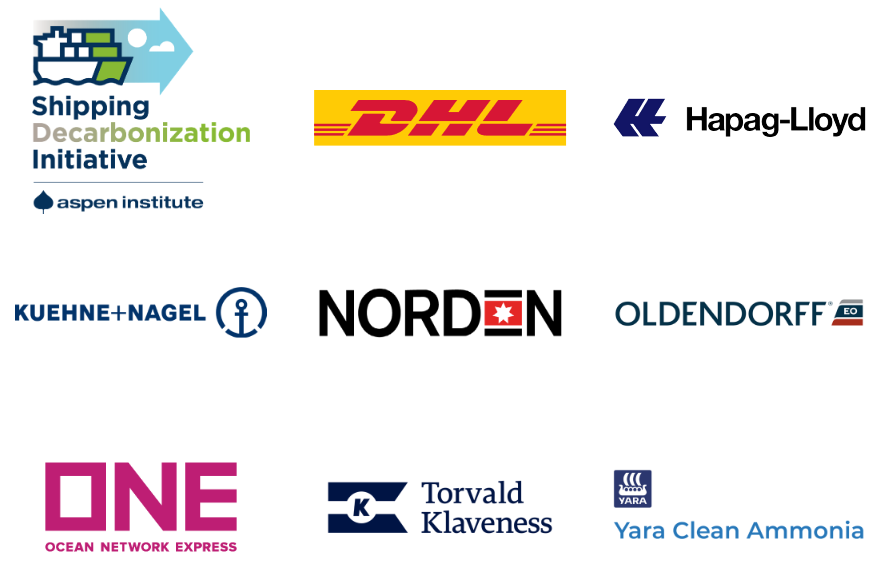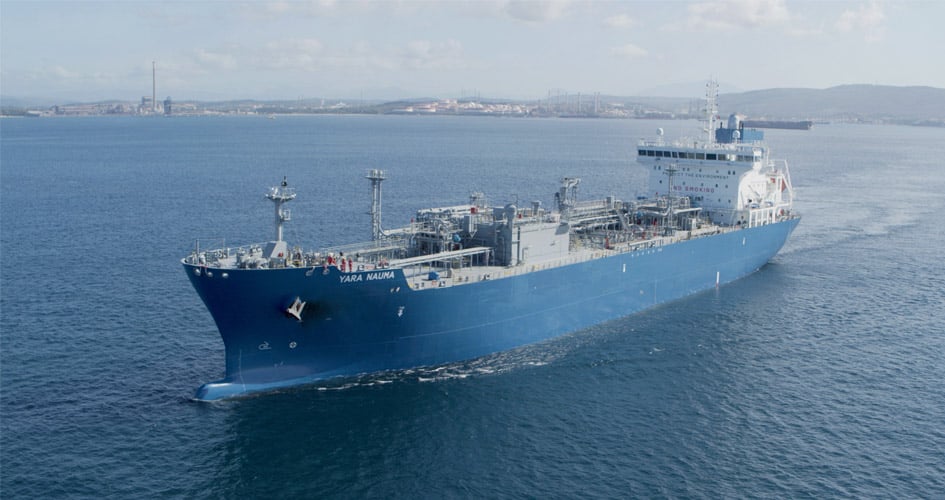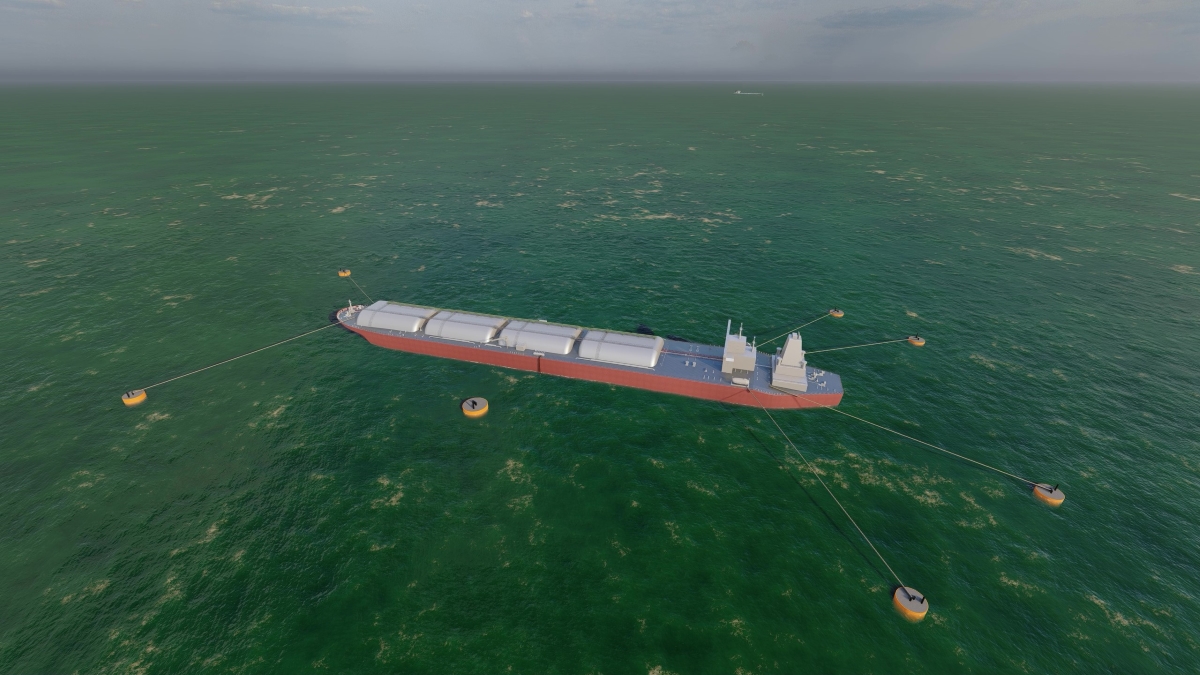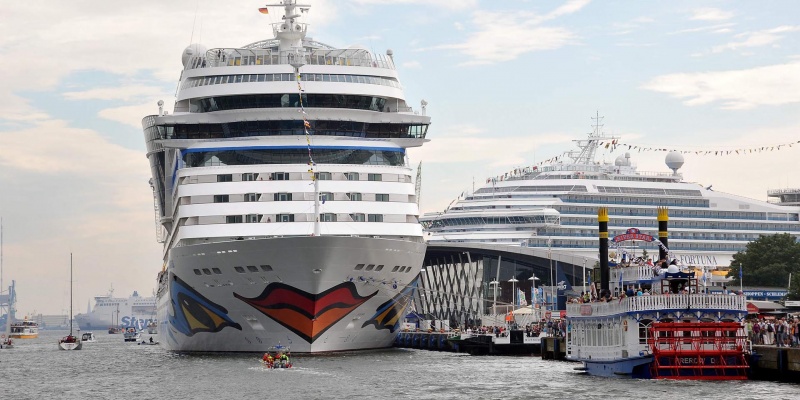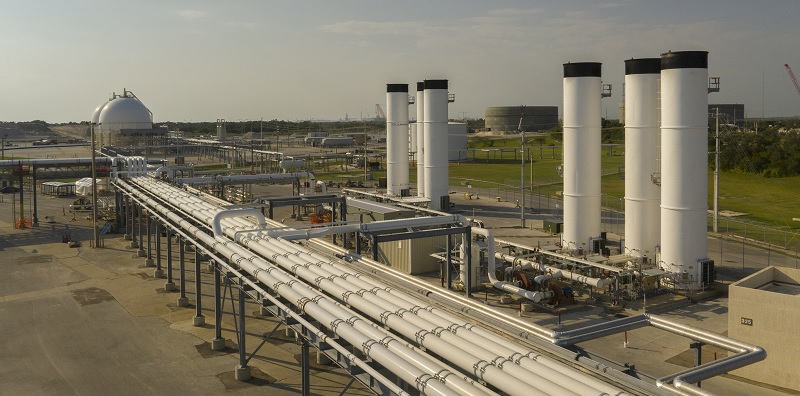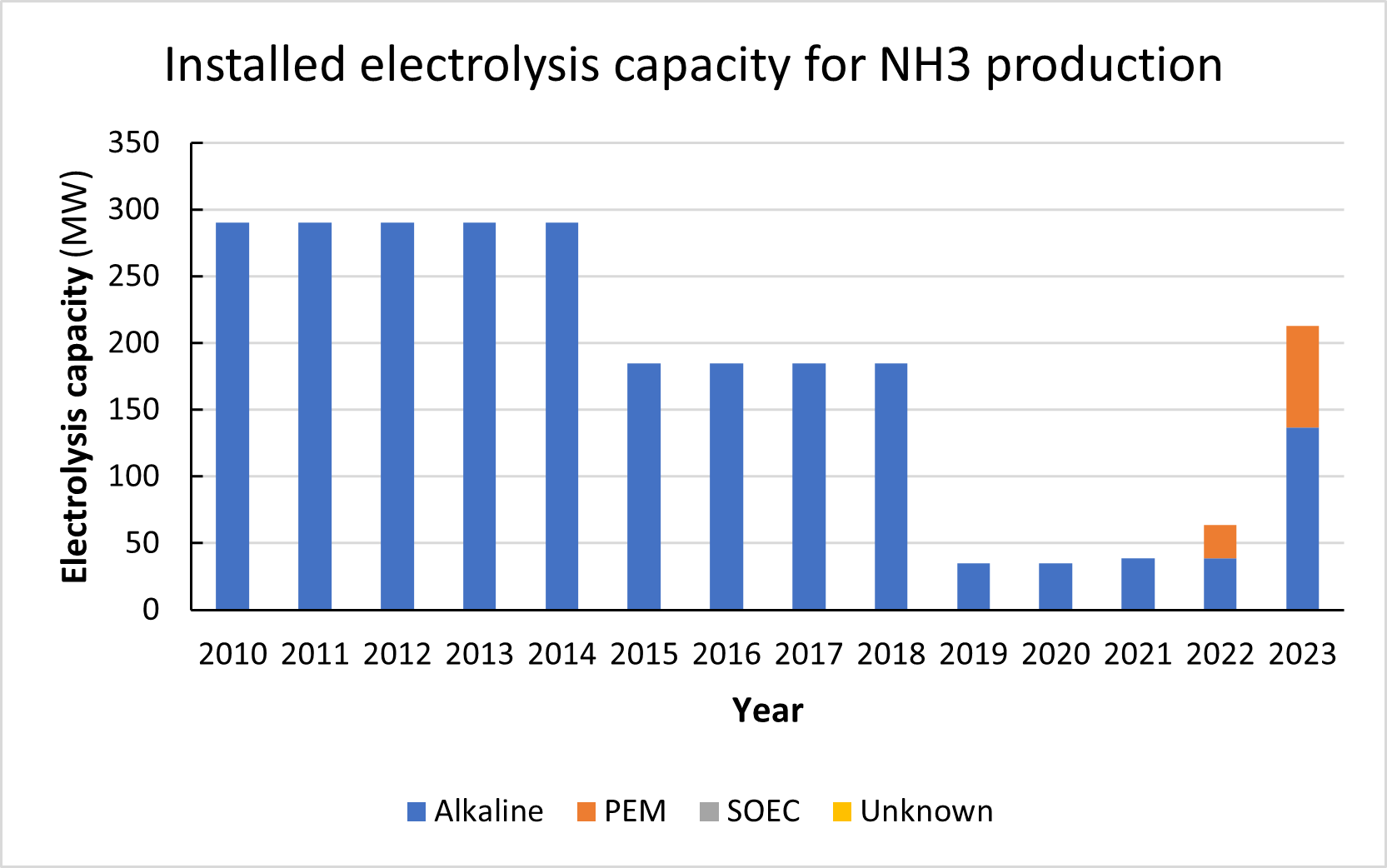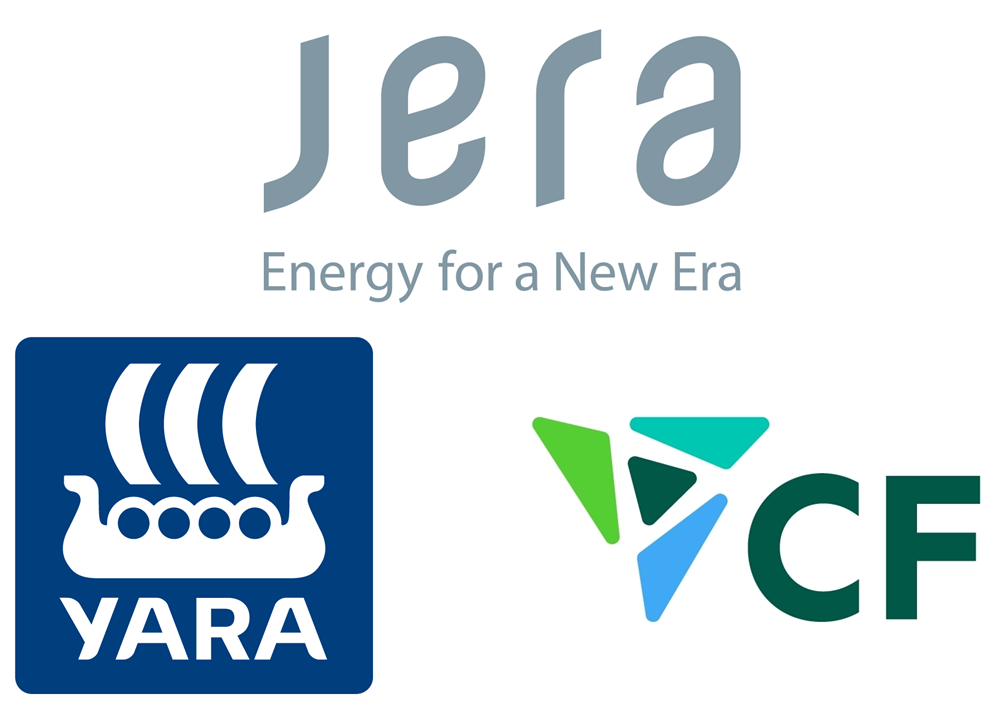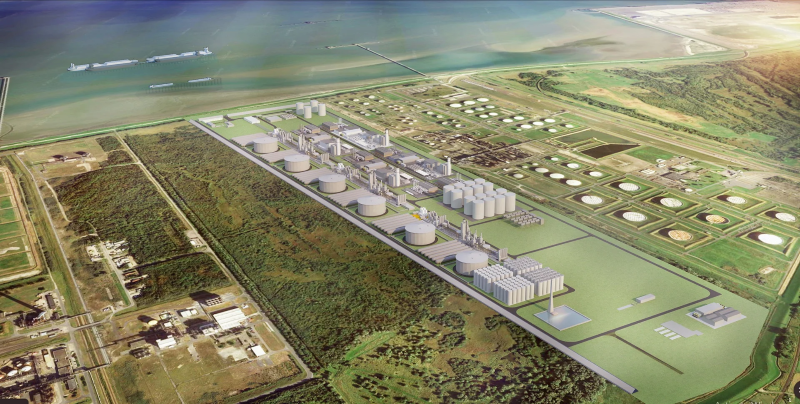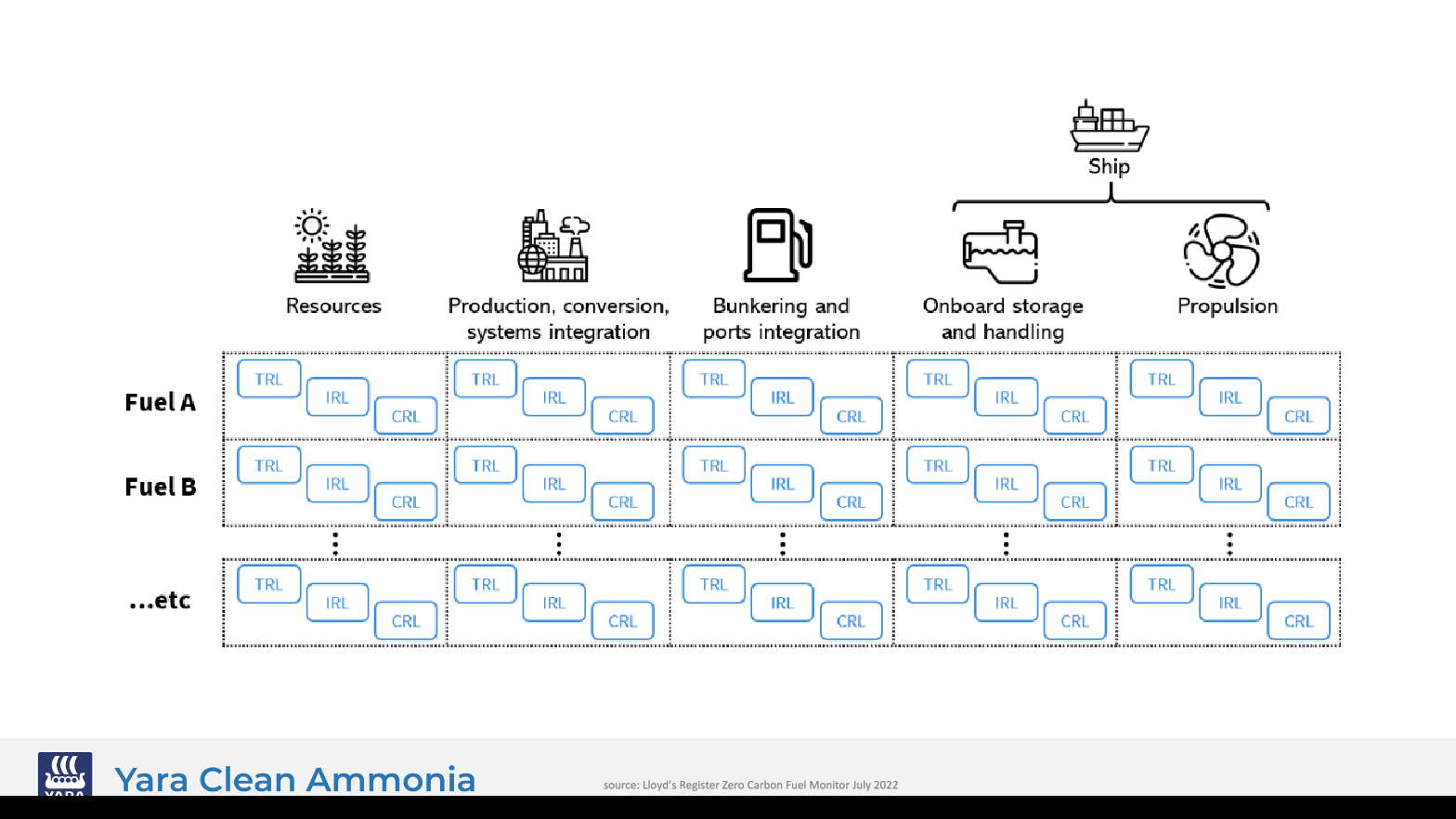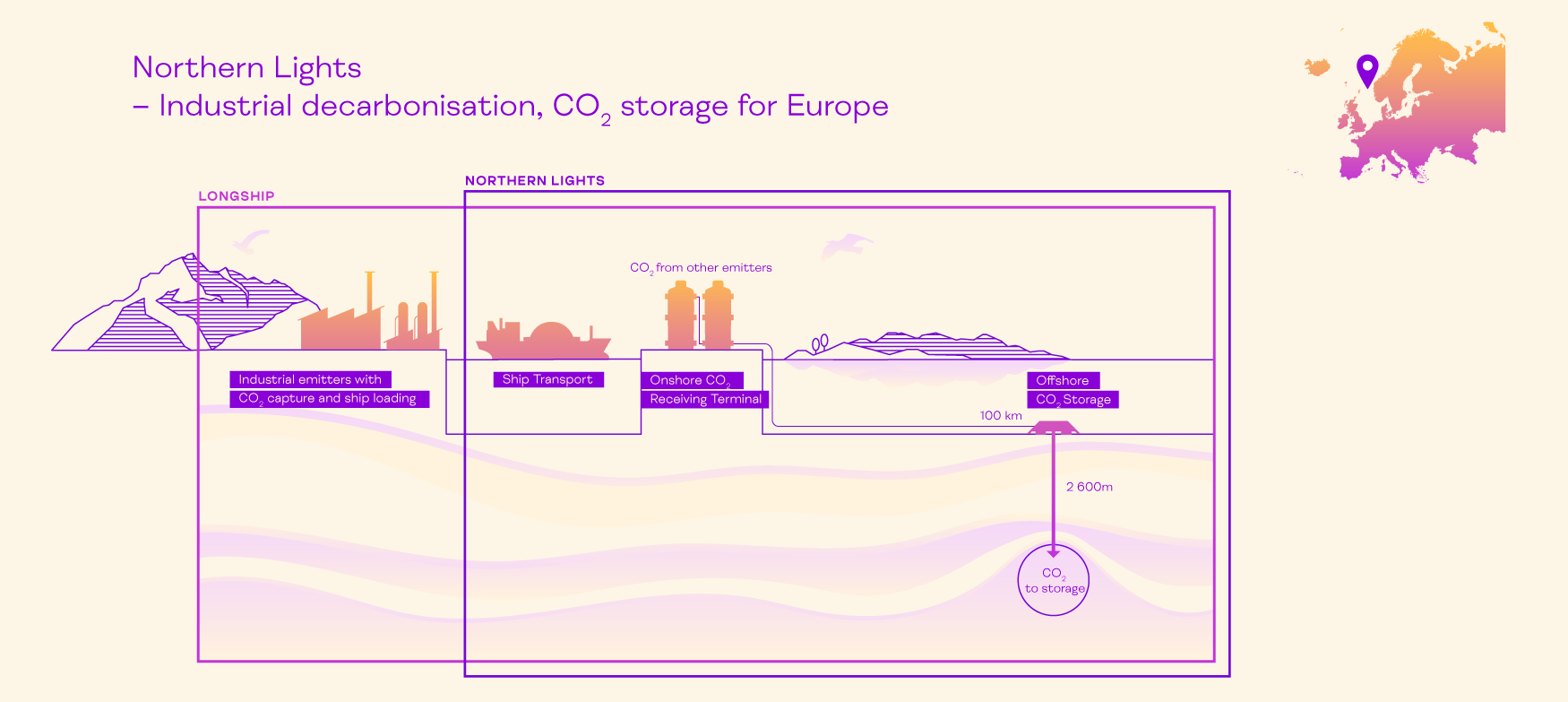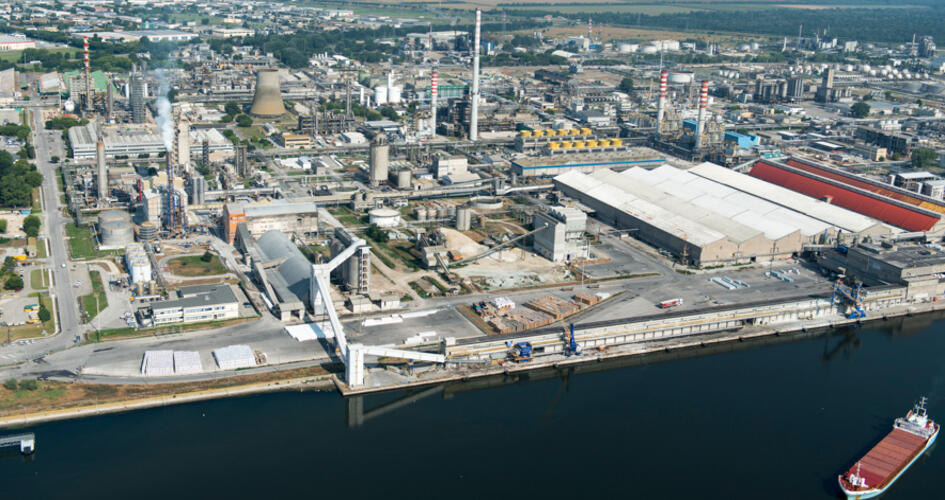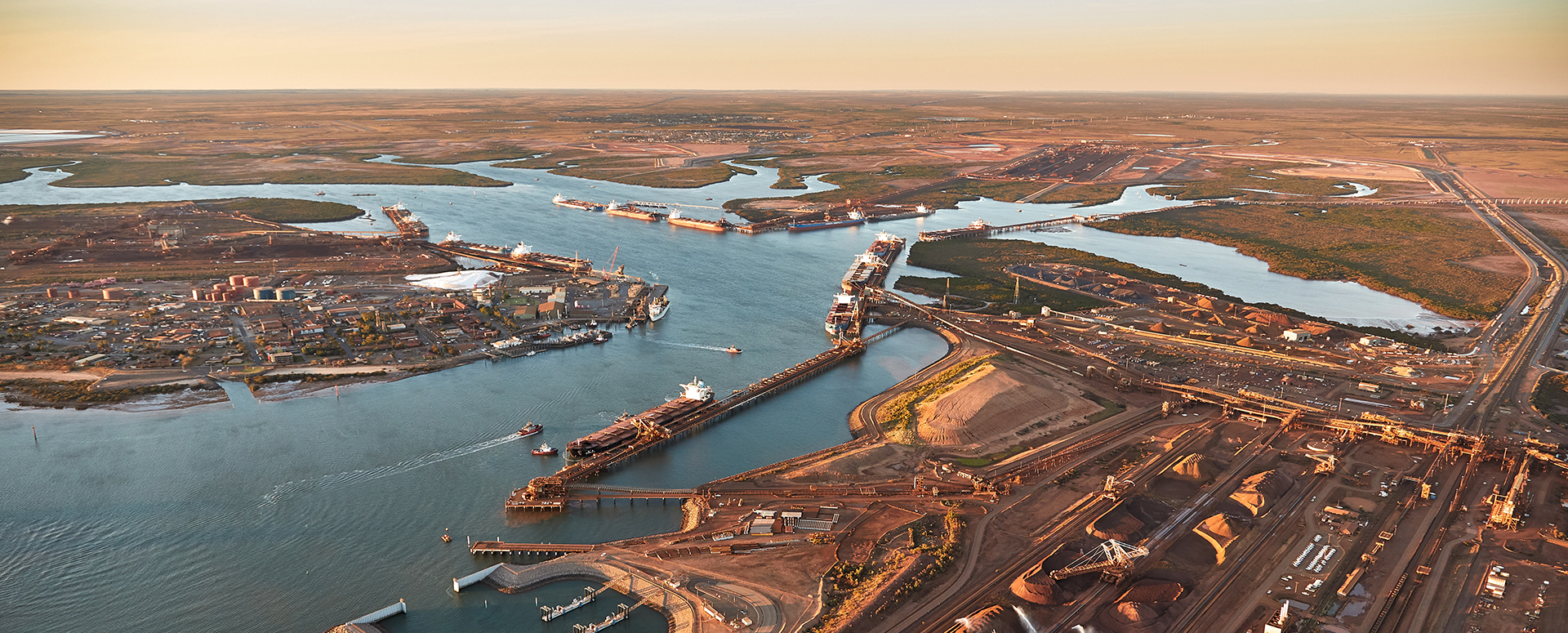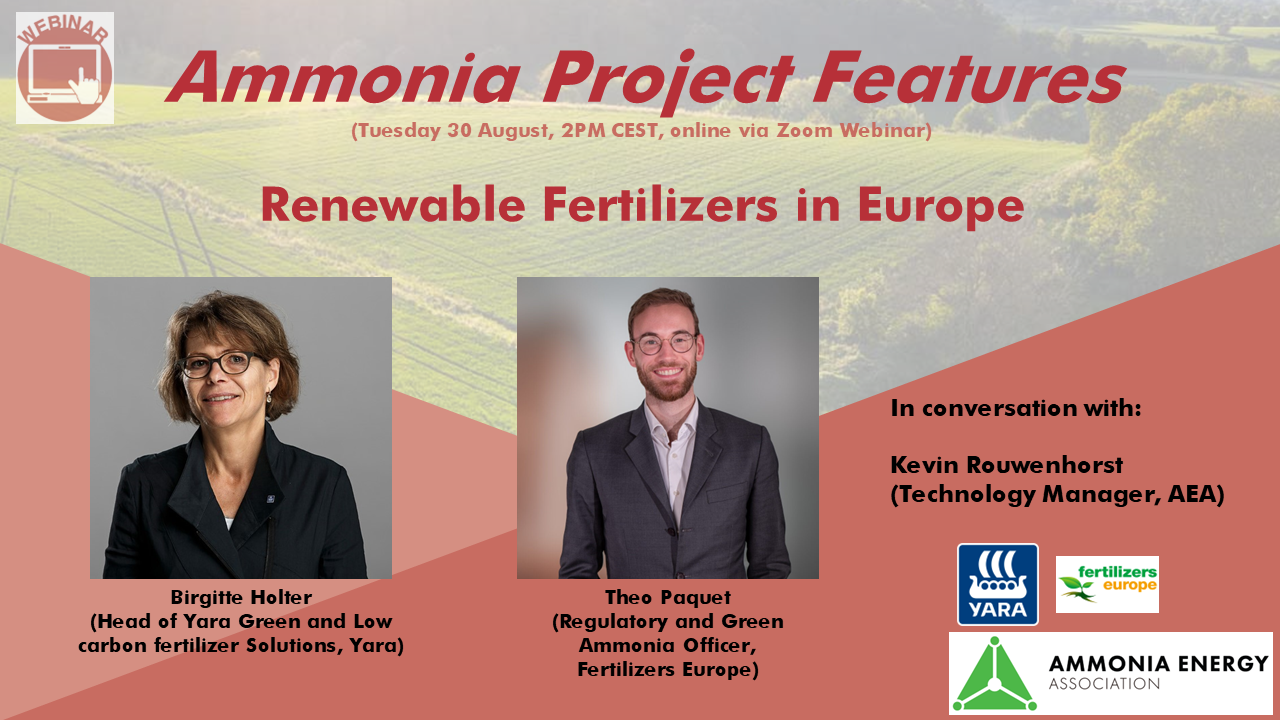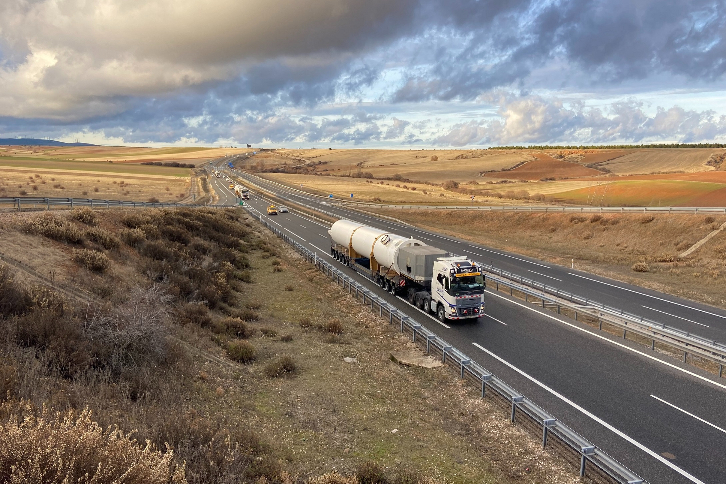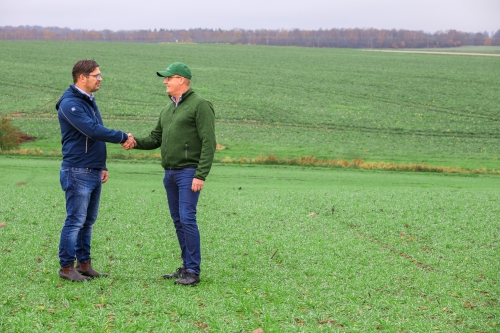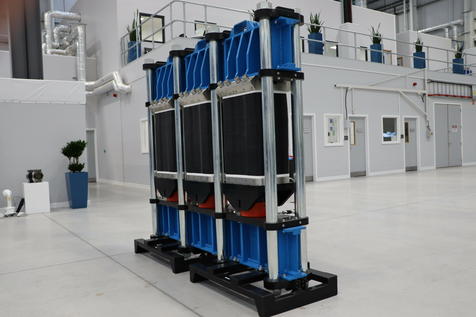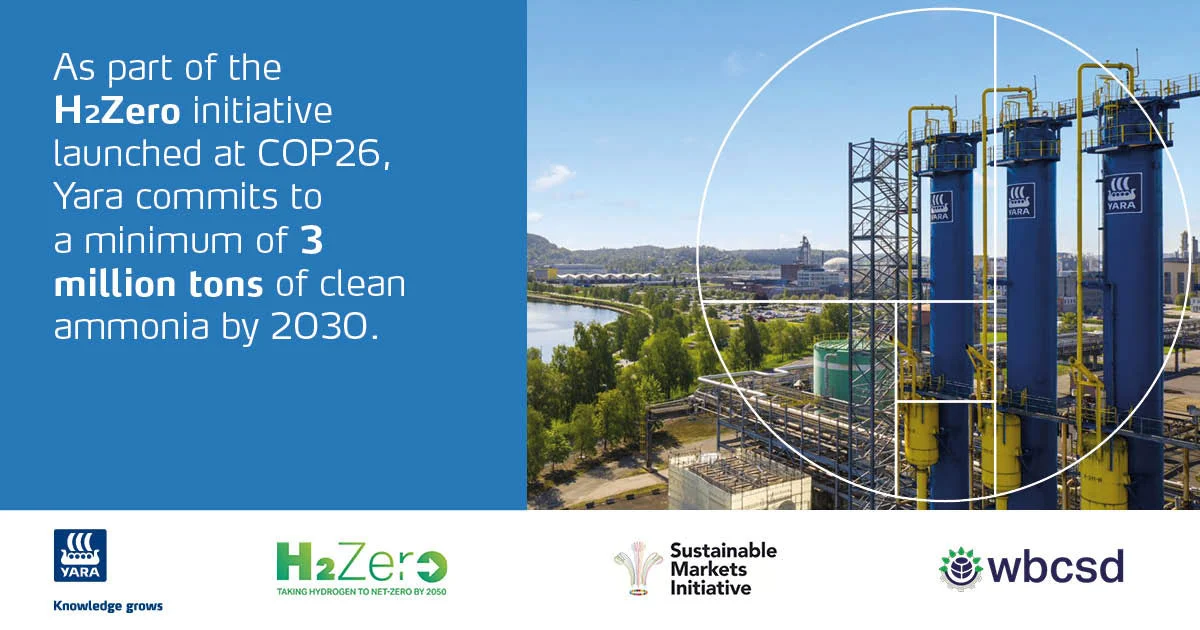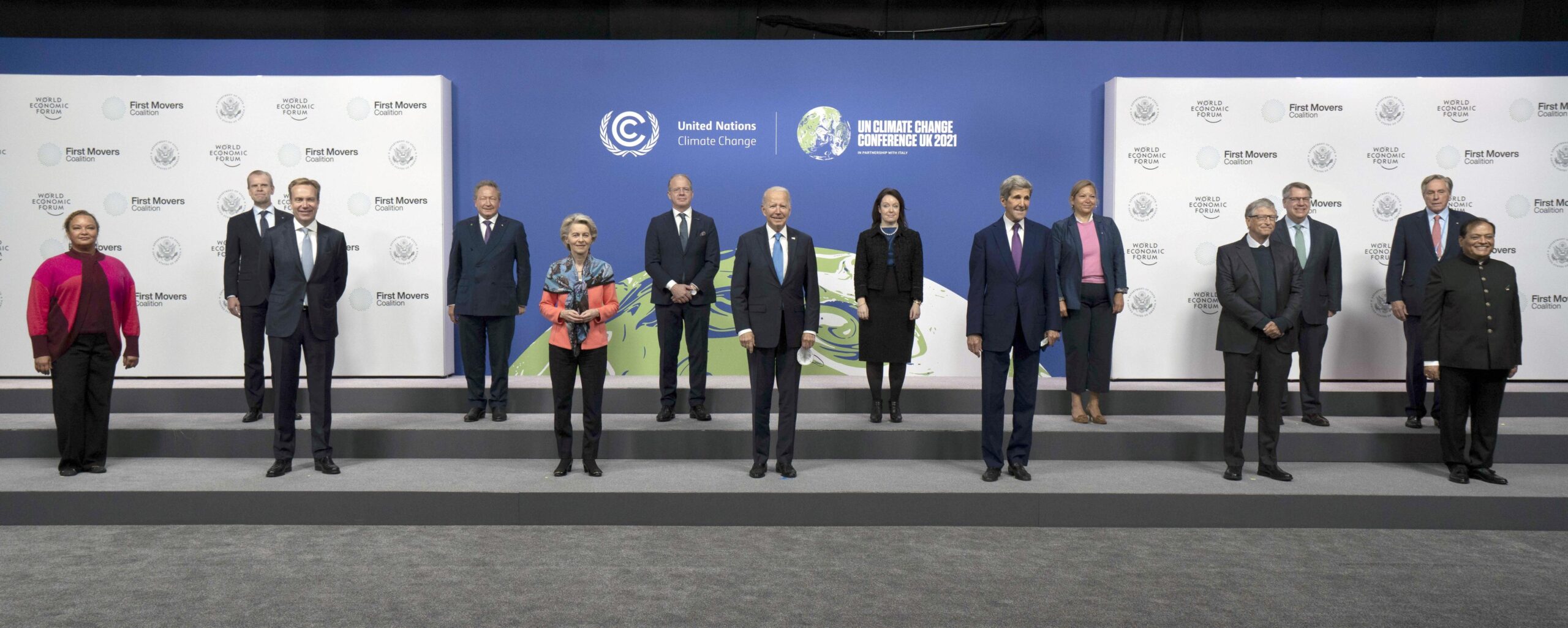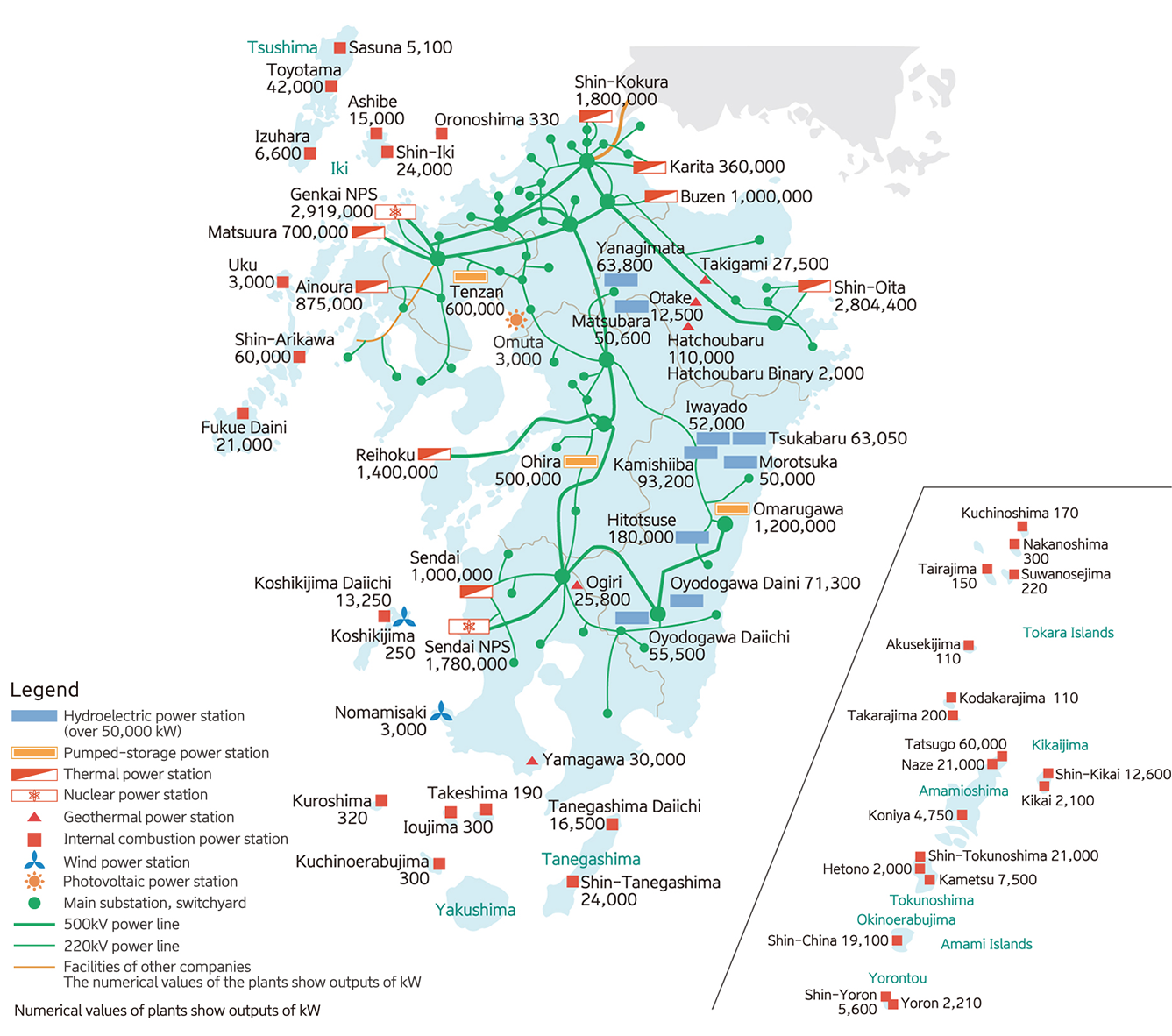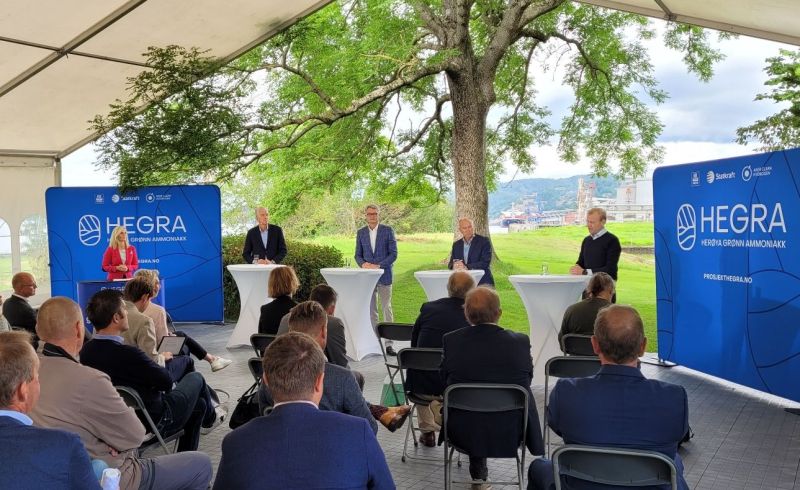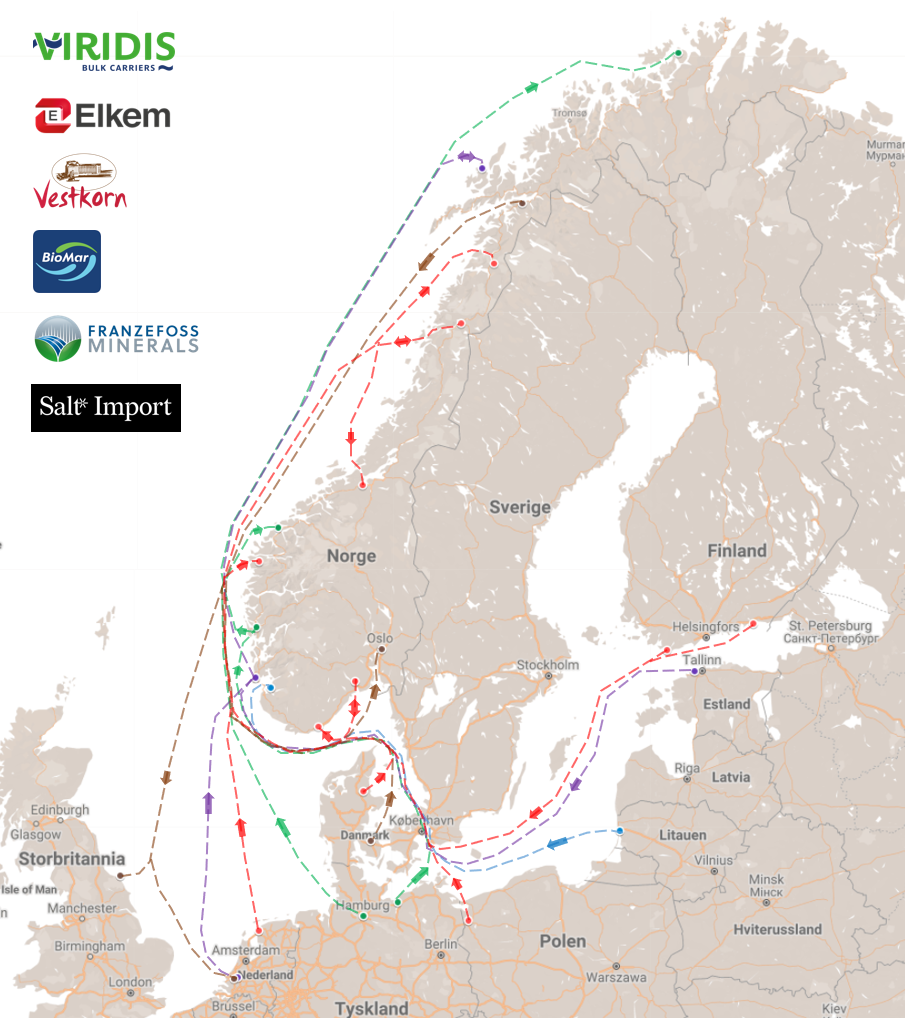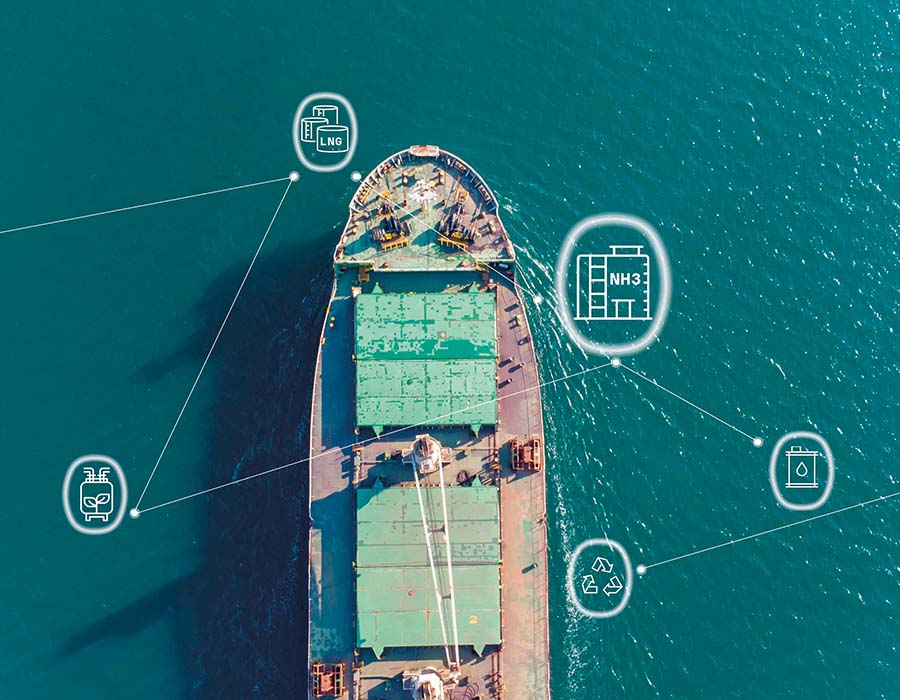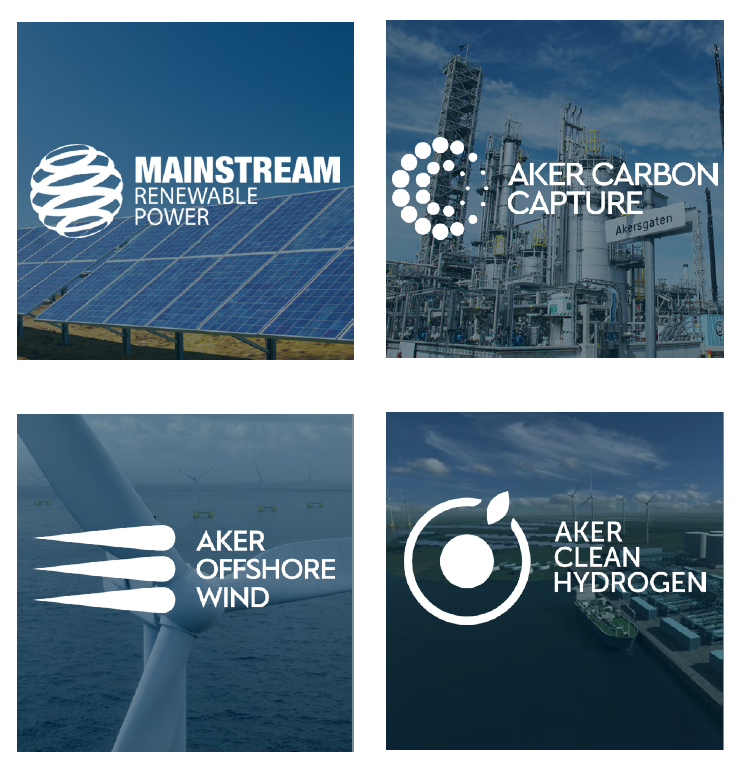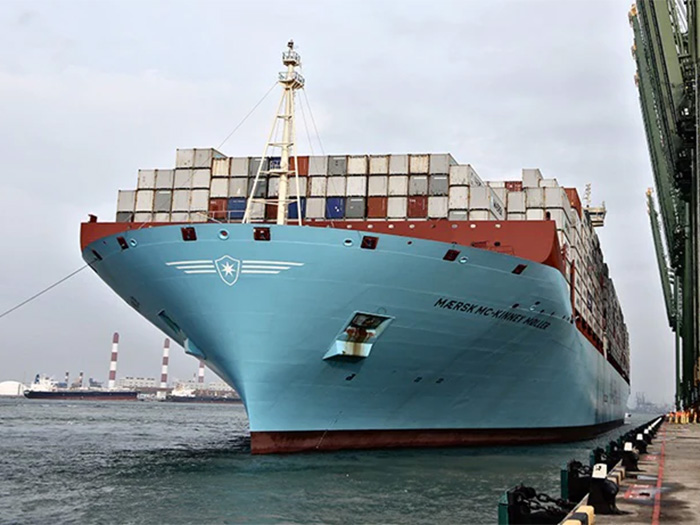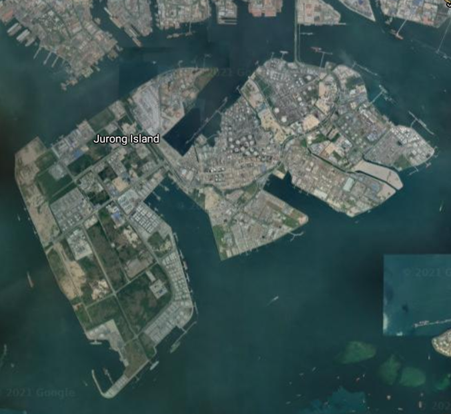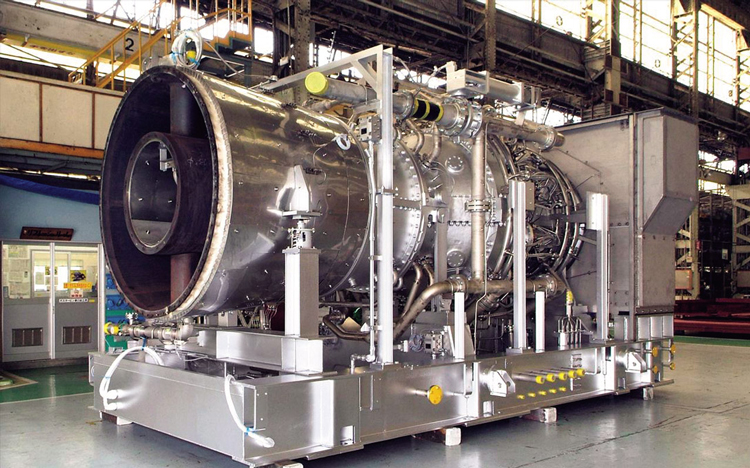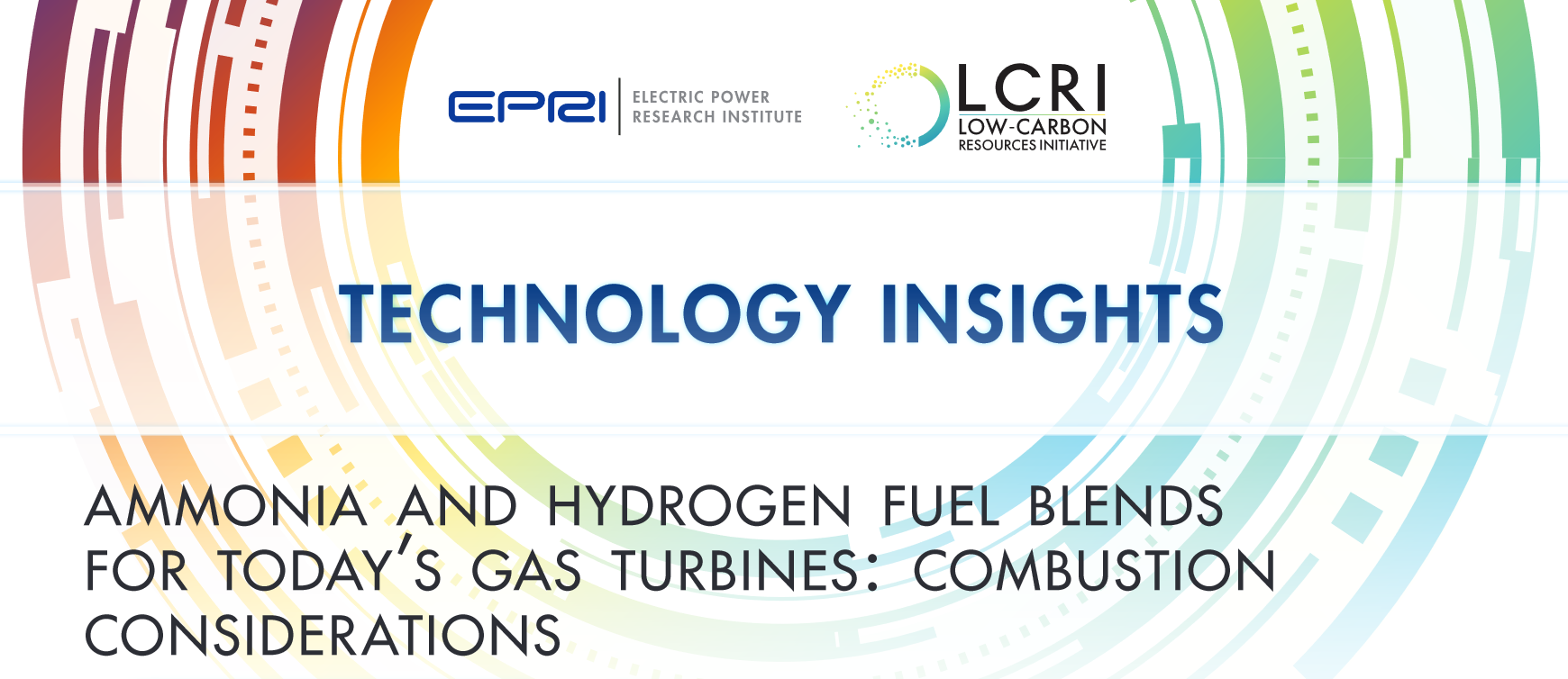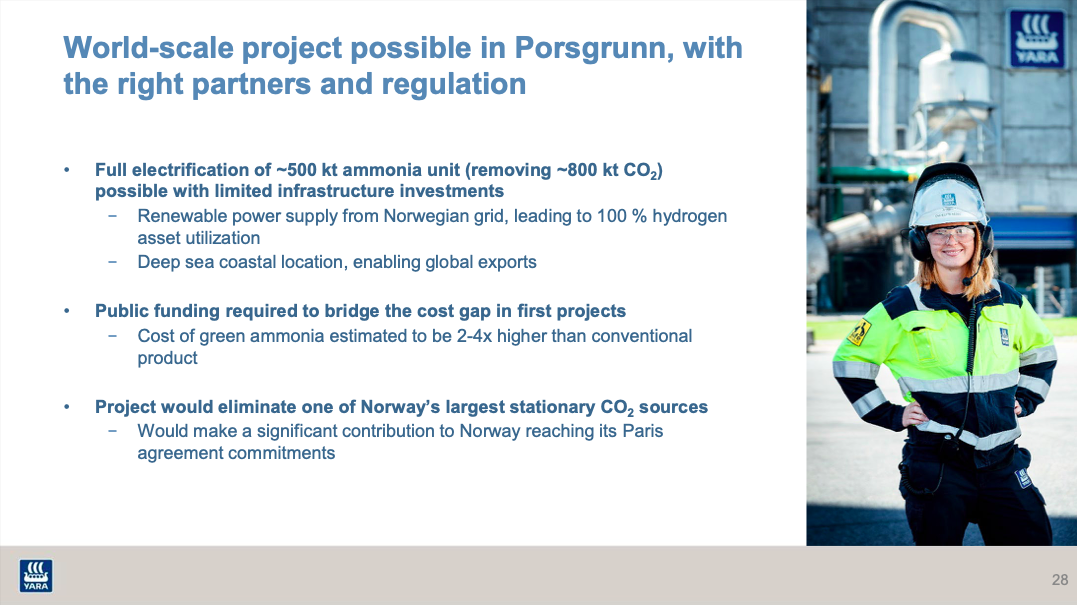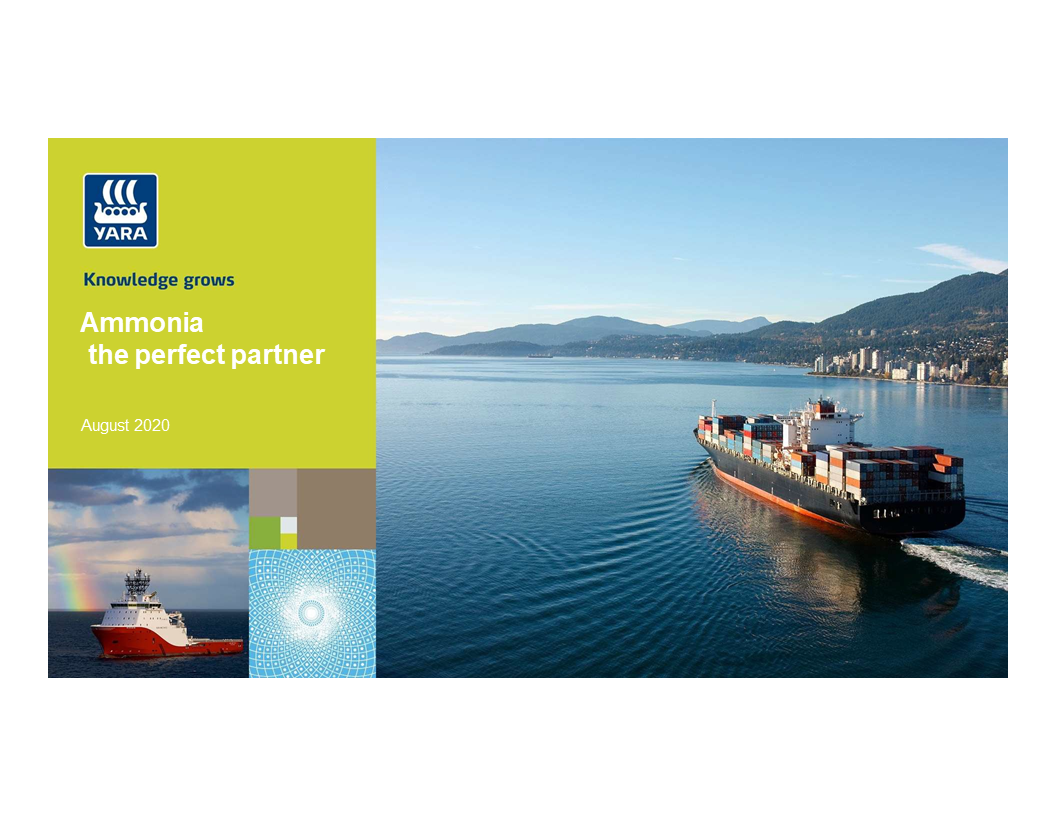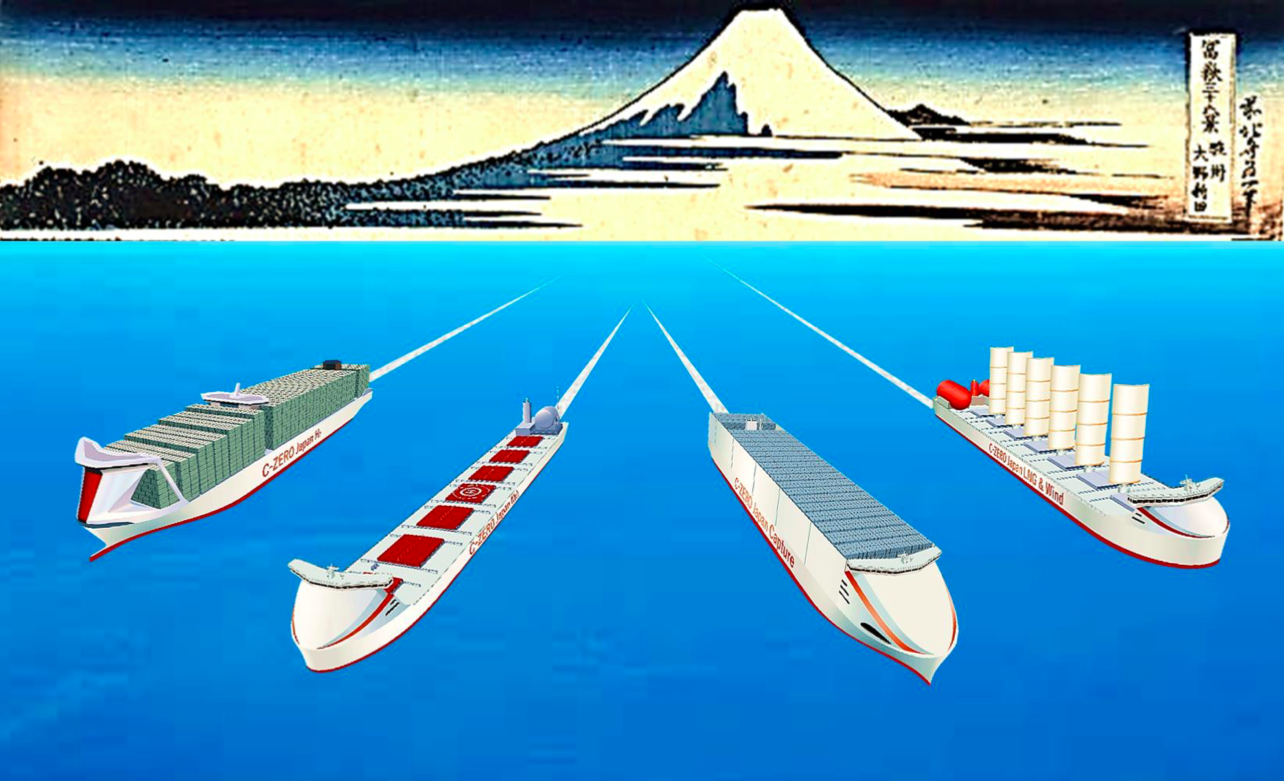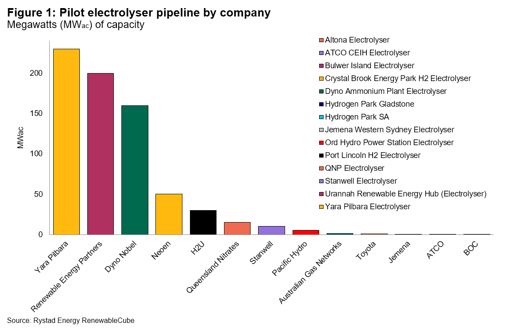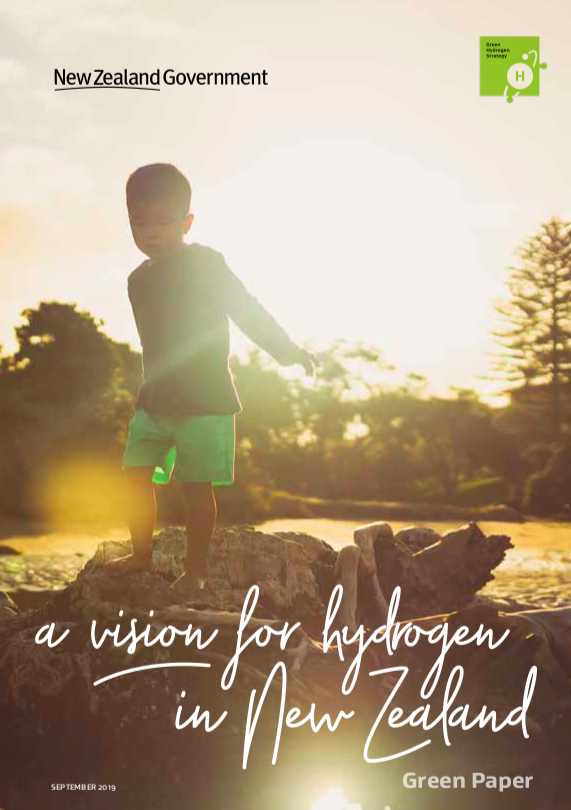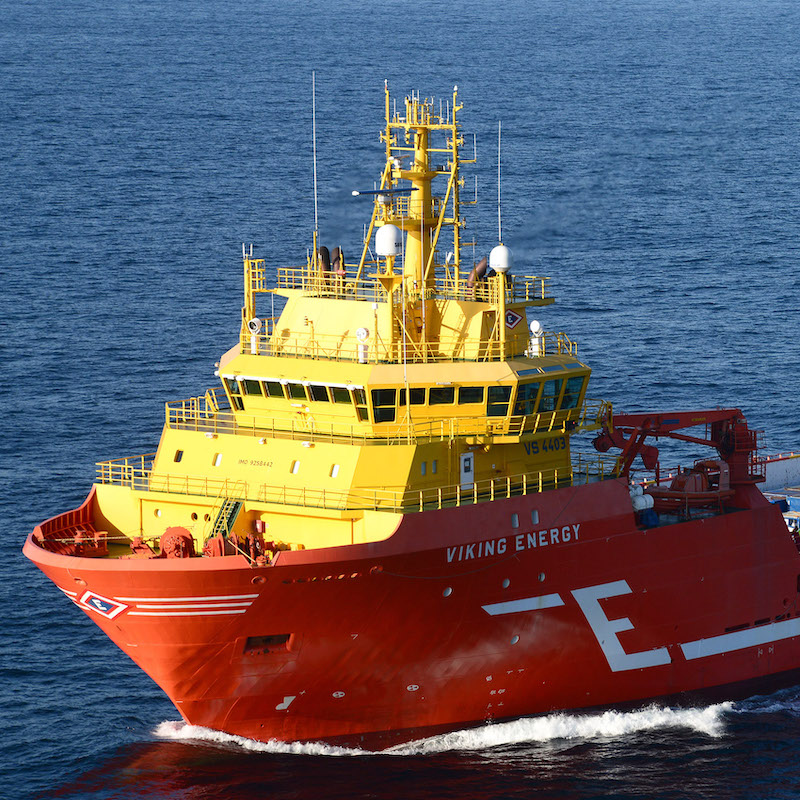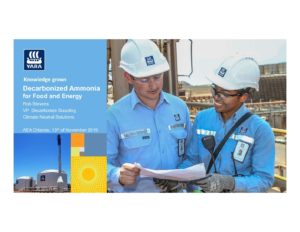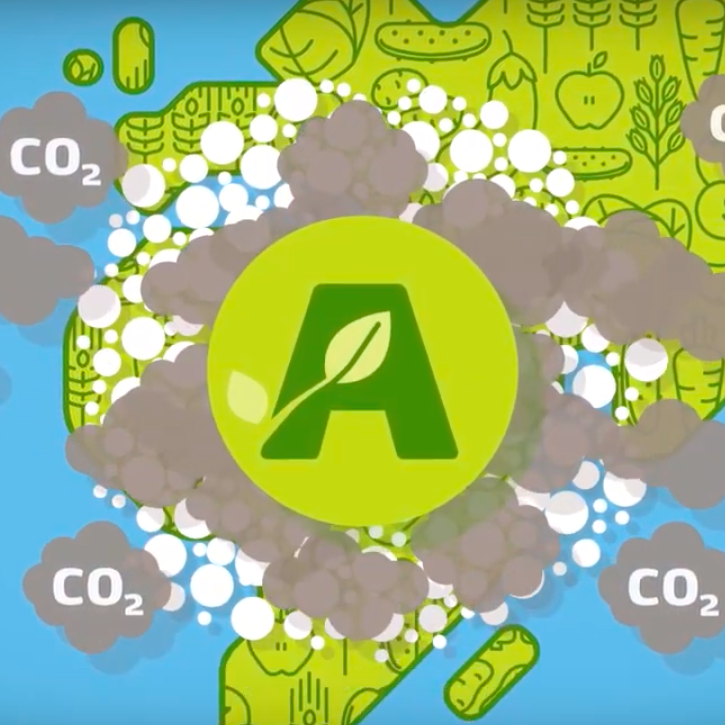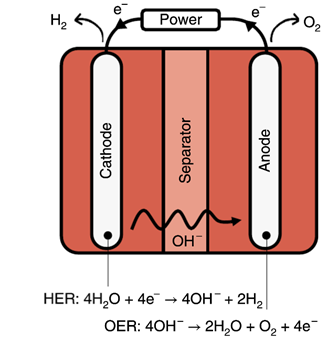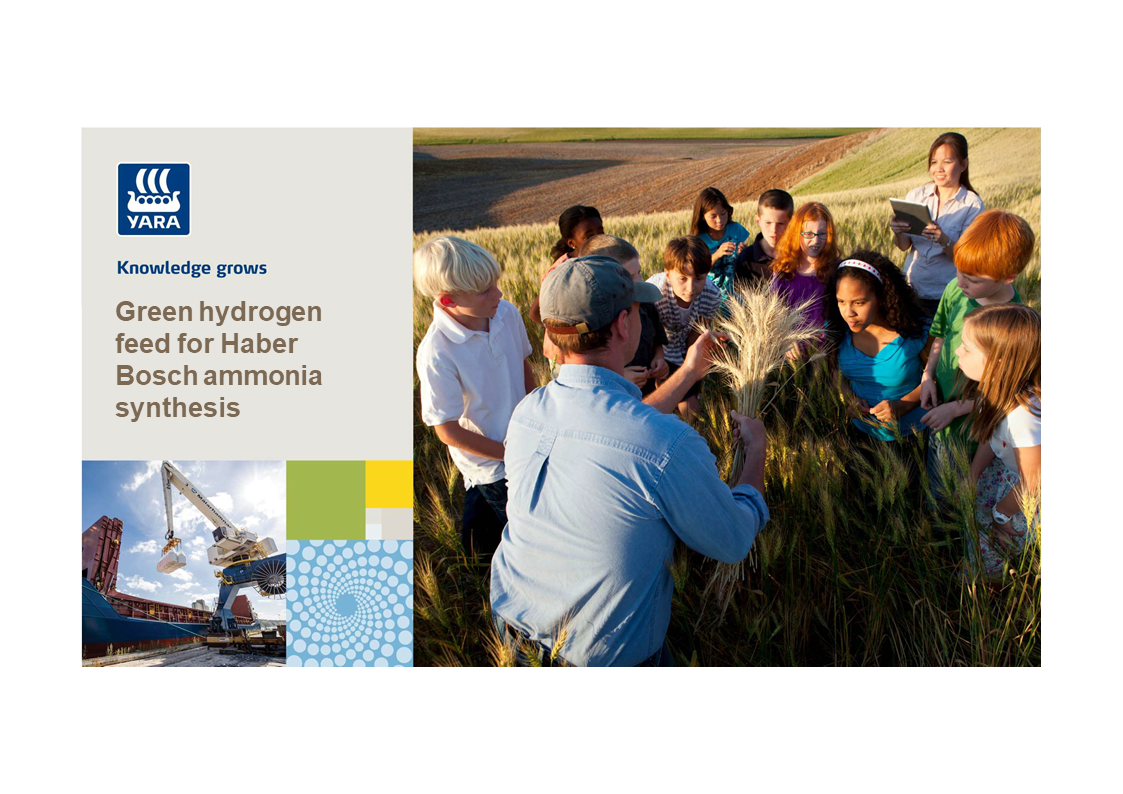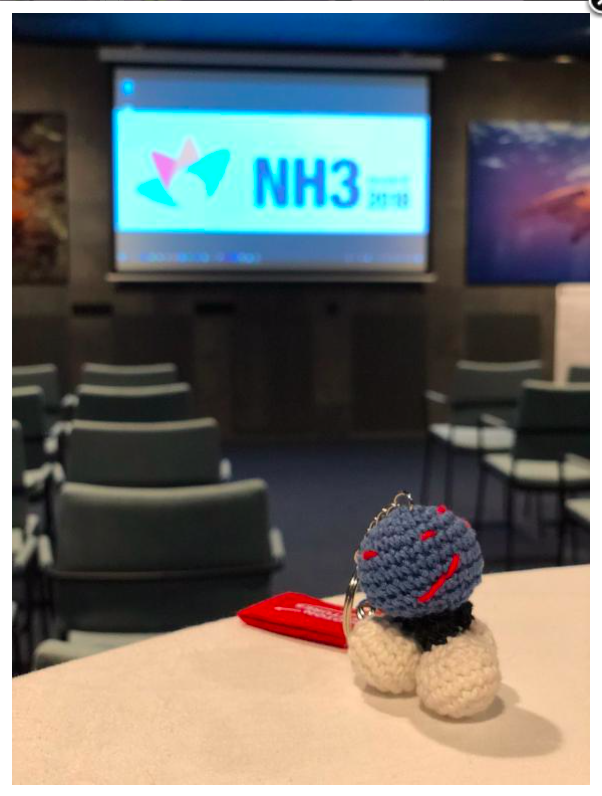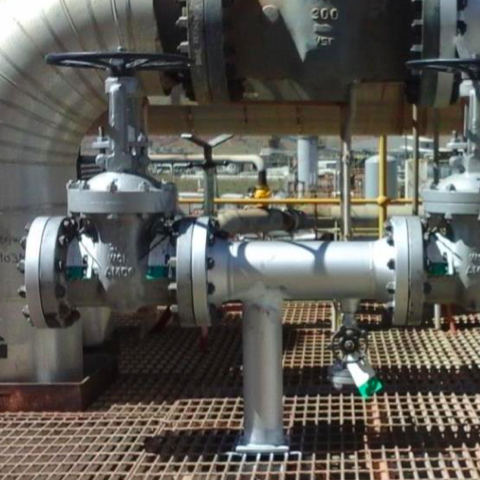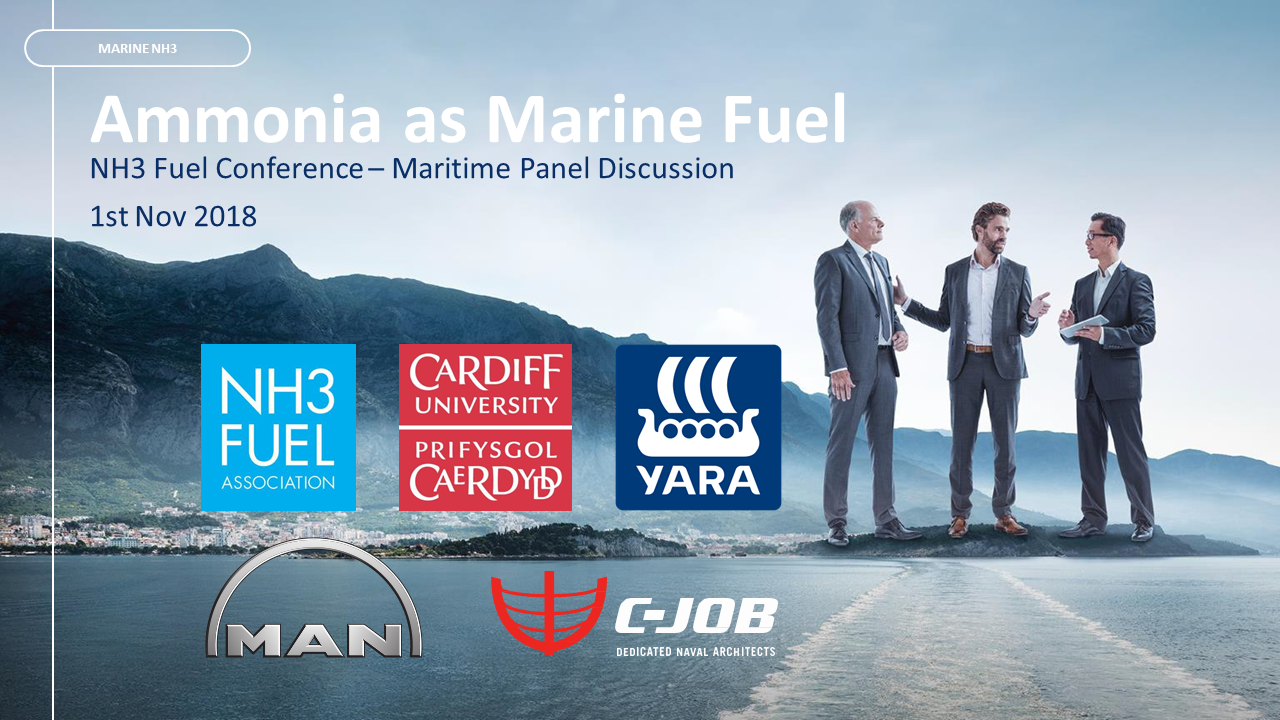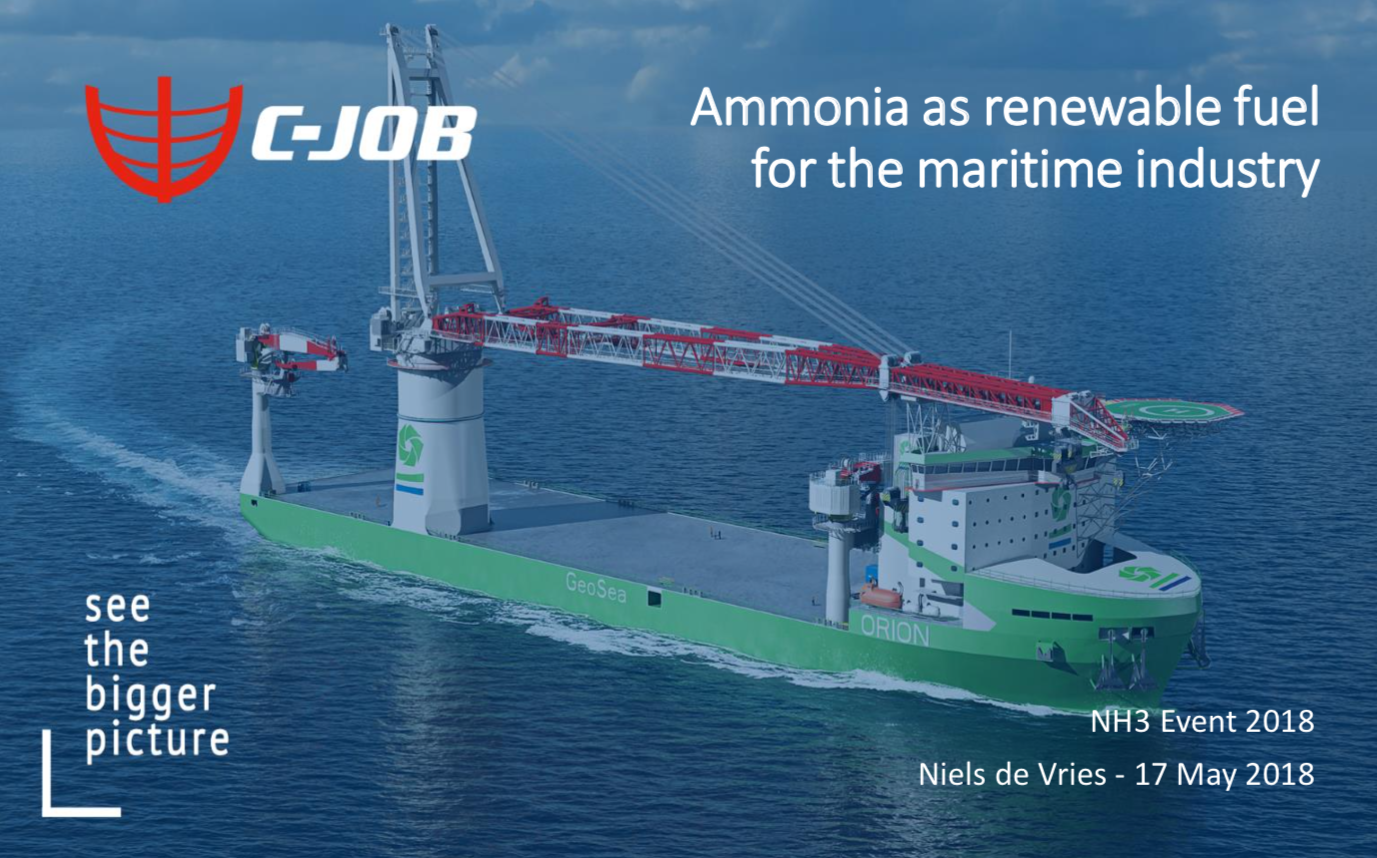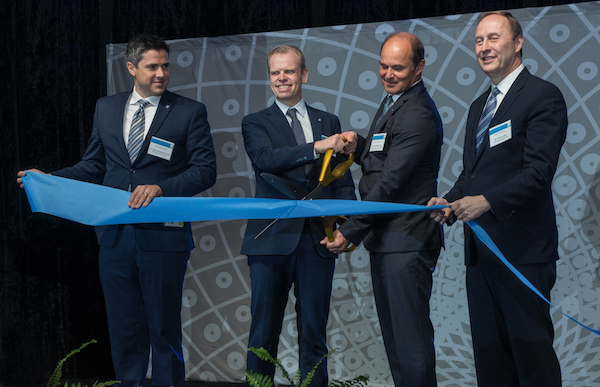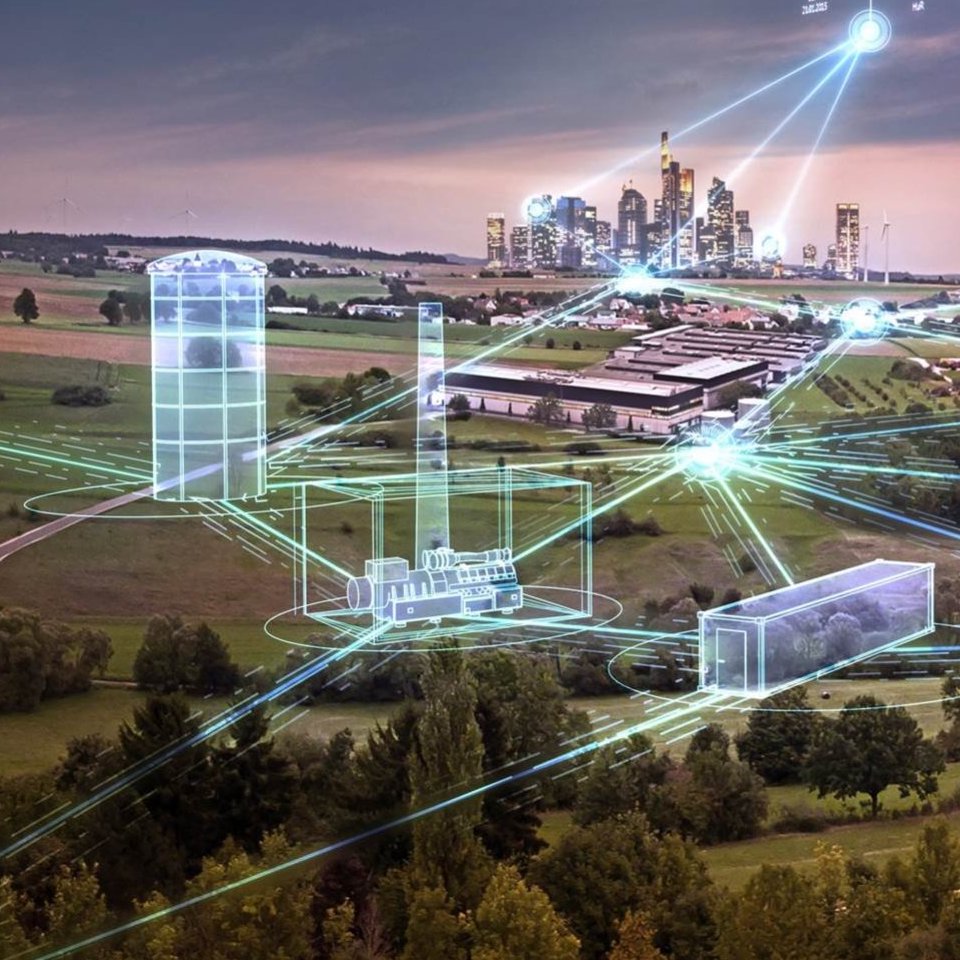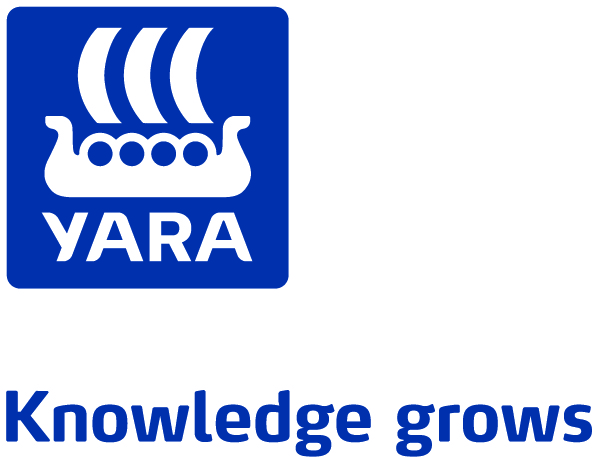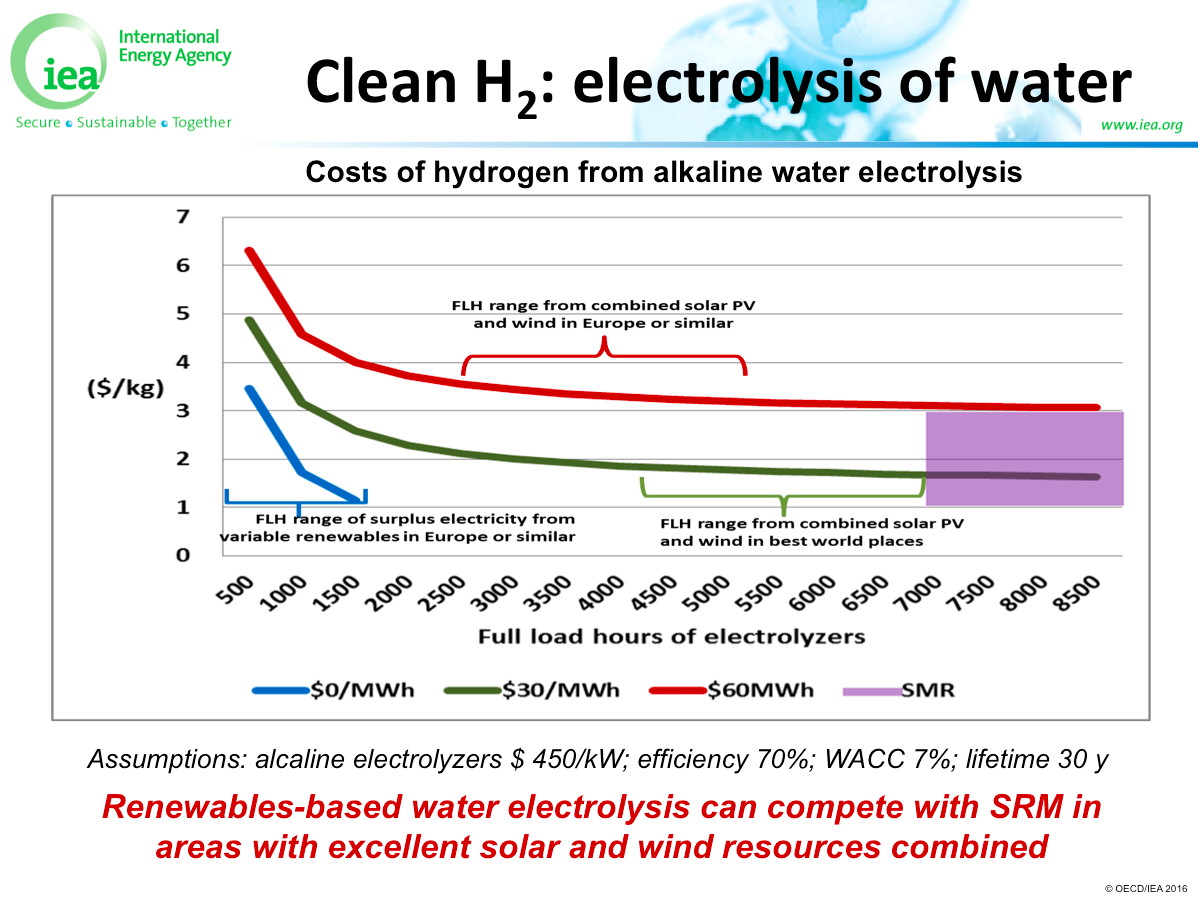Anglo-Eastern announced that the first cohort has successfully completed its inaugural Pilot Training Course on Ammonia as a Marine Fuel. Already the ship manager for the ammonia-fueled vessel Fortescue Green Pioneer, Anglo-Eastern will soon take on that responsibility for a series of vessels coming out of Chinese shipyards, managing vessels for CMB.TECH.
Content Related to Yara
Article
Anglo-Eastern prepares for the first ammonia-fueled ships in 2026
Julian Atchison December 18, 2025
Article
Technology choices to meet the EU’s new climate targets for 2040
Kevin Rouwenhorst December 18, 2025
The EU has set a legally binding climate target for 2040, at a 90% GHG emission reduction versus 1990 levels. But, while the 2030 emission target can theoretically be met with limited modifications to existing ammonia production plants in the EU, new technology pathway choices will have to be made well before 2040 to ensure compliance. We explore some of the options, and projects in progress.
Article
2025: an ammonia energy rollercoaster
Julian Atchison December 17, 2025
Despite the successes and progress made in 2025, the year remains a missed opportunity for ammonia energy. The first complete supply chains for renewable ammonia are emerging, and some 600,000 tons of annual production capacity is set to be online in northeast China early next year. Maritime engines, cracking, and power & heat technology solutions also made their mark, moving from feasibility into deployment. But disappointing outcomes at the IMO and government support that failed to spark market development remains an issue, with plenty of critical, detail-heavy work ahead of us in 2026.
Article
Air Products & Yara partner to advance low-emissions ammonia
Julian Atchison December 15, 2025
The pair are in advanced negotiations to cement a partnership that will de-risk and progress two key production projects: the Louisiana Clean Energy Complex in the USA, and NEOM in Saudi Arabia.
Presentation
ARISE Project Status
Ammonia/Sea water interaction still contains critical knowledge gaps that prevent us using consistently existing consequence modelling tools. ARISE project is specially designed to improve this situation. Despite important logistic and scientific challenges, ARISE project is progressing well and should reach final deliverable Q2 next year.
Presentation
Global Partnerships to Connect the Value Chain
In March 2025, Mitsui O.S.K. Lines (MOL) acquired Netherlands-based LBC Tank Terminals as part of a strategic move towards a “total chemical logistics service system”. The pair will leverage an impressive joint array of logistics infrastructure,working to unlock expanded future flows of ammonia. Meanwhile, Yara and MOL are ongoing partners in a series of first mover marine ammonia fuel projects, including time charters, to ship-to-ship bunkering demonstrations, and development of ammonia-fueled vessels. Learn more about the trio’s plans to connect to the full ammonia energy value chain.
Article
Yara Clean Ammonia charters more dual-fuel vessels
Geofrey Njovu September 19, 2025
Yara Clean Ammonia has reached a time-charter agreement with Navigator Ammon Shipping for two 51,000 m3 dual fuel midsized gas carriers to be delivered by October 2028. The company also celebrated the official start of construction of Yara Eyde, its new ammonia-powered container ship.
Presentation
Introduction to Yara Clean Ammonia: fueling a zero-carbon future
A look at Yara Clean Ammonia’s decarbonization portfolio, including plans for low-carbon ammonia production in the Pilbara, potentially serving local maritime fuel markets. Yara is also collaborating in a number of critical safety projects globally.
Article
PepsiCo & Yara extend fertilizers partnership to Latin America
Julian Atchison May 19, 2025
Yara will supply both low-emission fertilizers and decarbonizations services to potato farmers in Mexico, Colombia, Chile, and Argentina. The potatoes will be used in the production of Sabritas potato chips and other snack foods.
Article
Class societies prepare for marine ammonia fuel: safe operations, crew training, and risk management
Julian Atchison May 18, 2025
ClassNK, DNV, Lloyd’s Register and the American Bureau of Shipping have all released new resources to support the implementation of marine ammonia fuel. We explore vessel operation guidelines and best-practice recommendations, seafarer training programs, and models for ammonia leak dispersion onboard vessels.
Article
Yara and NYK: time-charter agreement for ammonia-fueled medium gas carrier
Geofrey Njovu March 11, 2025
Following a time-charter agreement between the two companies, NYK will deliver an ammonia-fueled medium gas carrier to Yara Clean Ammonia in November 2026.
Article
Decarbonising existing fertiliser capacity in Damietta, Egypt
Julian Atchison March 04, 2025
thyssenkrupp Uhde will supply technology for decarbonising three existing ammonia & urea plants operated by Misr Fertilizers Production Company (MOPCO) on the Nile Delta. This includes electrolysis capacity to feed the production of 150,000 tons per year of renewable ammonia, with Yara Clean Ammonia already committed as offtaker.
Article
New ammonia fuel production plant for Florø, Norway
Julian Atchison January 22, 2025
North Ammonia and Fjord Base Holding will develop a renewable ammonia production facility at the Fjord Base maritime logistics hub in Florø, Norway. Yara and Azane have already received safety approvals to construct their first ammonia bunker facility at Fjord Base, consisting of one of Azane’s floating ammonia bunker barges.
Article
Yara: biomethane-based fertiliser production in Brazil
Geofrey Njovu December 19, 2024
A first in the Brazilian market, Yara has commenced the production of biomethane-based nitrate fertilisers at its Cubatão complex, reducing the carbon footprint by up to 75%. The first batch of the low carbon fertiliser has been delivered to coffee farmers in the Cooxupe cooperative.
Article
Yara expands capacity for low-emission imports into Europe
Julian Atchison October 22, 2024
Yara is expanding its capabilities for import of low-emission ammonia across Europe, with new infrastructure and a series of offtake agreements already announced in 2024. Hear more from Yara Clean Ammonia CEO Hans Olav Raen at our upcoming annual conference.
Article
Yara, Trammo: increasing ammonia import capabilities in Europe
Julian Atchison October 15, 2024
Yara has officially opened its new ammonia import terminal in Germany, with enough capacity to handle 3 million tons of ammonia imports per year. In France, Trammo will support the redevelopment of a section of Elengy’s Fos Tonkin LNG terminal into an ammonia import location, including construction of an ammonia storage tank, rail access and bunkering facilities.
Article
Ship-to-ship ammonia transfers pave the way for ammonia bunkering in the Pilbara
Julian Atchison September 23, 2024
Led by the Global Centre for Maritime Decarbonisation, a consortium has successfully executed a ship-to-ship ammonia transfer in outer anchorage, simulating ammonia bunker fuel operations within a port for the first time.
Article
AM Green Ammonia reaches FID for its first million tons of renewable ammonia production
Julian Atchison August 30, 2024
AM Green Ammonia, a Greenko spinout entity focused on the production of renewable ammonia in India, announced that it has reached FID on the first phase of a multi-million ton per year plant.
Article
Yara to offtake renewable fertiliser from ATOME
Julian Atchison July 29, 2024
Yara has secured a long-term supply from ATOME’s Villeta project in Paraguay. Hydropower from the Itaipu Dam will power the production of electrolytic hydrogen, ammonia and then calcium ammonium nitrate fertiliser, which will be marketed and sold as part of Yara’s “Climate Choice” product line.
Article
Yara to supply low-carbon fertilizer to PepsiCo in Europe
Julian Atchison July 24, 2024
By 2030, Yara will supply 165,000 tons per year of “Yara Climate Choice fertilizers” to PepsiCo Europe for distribution to participating farmers. This volume will cover around 25% of PepsiCo’s fertilizer needs in Europe, focusing first on potato crops, and then moving into other key crops such as oats and corn.
Article
$37 billion in Egyptian ammonia investments
Julian Atchison July 15, 2024
More than $37 billion will be invested across the initial stages of hydrogen and ammonia production projects, ranging in location from the Gulf of Suez to west of the Nile Delta. A series of agreements concerning existing and newly-announced projects were signed at the recent Egypt-EU Investment Conference.
Article
Yara: electrolysis plant opened in Herøya, Norway
Geofrey Njovu June 19, 2024
Yara’s newly commissioned plant at Herøya Industrial Park will produce 10 tons per day of renewable hydrogen, enabling the production of 20,000 tons of renewable ammonia per year.
Article
Marine engines ordered, construction contracts signed
Julian Atchison June 12, 2024
WinGD’s X‑DF‑A dual-fuel engines have been ordered by Singapore-based shipping giant AET for deployment onboard new Aframax tankers, being built in China. Fishing vessels operators Vardin and Framherji have ordered Wärtsilä 25 engines for a series of three fishing trawlers that will operate in the Faroe Islands. In construction news, CMB.TECH will build the Yara Eyde vessel for Yara and North Sea Container Line in China, with vessel delivery scheduled for mid-2026.
Article
Yara Clean Ammonia and Greenko: renewable ammonia term sheet signed
Julian Atchison May 27, 2024
Fifty percent of phase one production will be supplied to Yara Clean Ammonia from Greenko’s planned production facility in Kakinada, southern India. The offtake agreement covers “long-term supply” of ammonia, which will be compliant to EU import requirements.
Article
Safety approvals for ammonia energy in Norway, Netherlands
Julian Atchison April 08, 2024
Yara and Azane have received approval from Norway’s Directorate for Civil Protection to construct their first ammonia bunker facility at Fjord Base, with the bulk of bunker operations to provide offshore supply vessels with ammonia fuel. In the Netherlands, the Dutch EPA has granted a permit to OCI Global to construct a 60,000 ton ammonia storage tank in Rotterdam, based on requirements that will feature in the updated version of PGS-12.
Article
Yara, ACME ink new renewable ammonia supply deal
Julian Atchison April 04, 2024
The pair have signed a firm and binding agreement for the supply of ammonia from ACME’s under-development project in Oman. 100,000 tons per year of RFNBO-compliant, renewable ammonia will be delivered from 2027, feeding into Yara’s global distribution system.
Article
Marine ammonia fuel systems, tanks, charters and vessel AiPs
Julian Atchison February 14, 2024
In marine ammonia news to begin 2024, we explore a volume-efficient, “prismatic” ammonia fuel tank design, a new long-term charter for ammonia shipping in the Pacific region, and two global gas exporters ordering ammonia-capable carriers for their fleets.
Article
Yara commits to Northern Lights for CCS ammonia production
Julian Atchison December 18, 2023
Yara and Northern Lights have entered into a binding agreement for a carbon, capture & sequestration chain to decarbonise ammonia production at Yara’s Sluiskil plant in the Netherlands. From 2025, 800,000 tonnes of captured CO2 will be transported and sequestered at Northern Lights’ site off the coast of Norway each year.
Article
Höegh Autoliners: progress on Aurora Class vessel
Julian Atchison November 28, 2023
Höegh expects the first pair of ammonia-powered car carriers to be delivered late next year from China Merchants Heavy Industry at the Jiangsu Shipyard in China. This month, a new LNG/ammonia tank was installed in the first of the vessels, and MAN ES engines have arrived from Korea, with installation to take place in early December. Höegh has also announced a partnership with Yara Clean Ammonia to develop a future supply of ammonia fuel for the vessels.
Article
The Yara Eyde: ammonia-powered container shipping over the North Sea
Julian Atchison November 28, 2023
Yara Clean Ammonia, NorthSea Container Line and Yara International announce the new vessel will sail from 2026, operating between Norway and Europe. Yara Clean Ammonia will supply ammonia fuel via a storage and bunkering network that is being developed with Azane Fuel Solutions, with the first demonstration to take place in Brevik, Norway.
Article
Decarbonizing existing, SMR-based ammonia plants: workshop recap
Kevin Rouwenhorst November 26, 2023
Decarbonization of existing steam methane reforming-based ammonia plants is possible, and changes in gas and heat flows can be recovered via alternative technologies. Recap our workshop in Atlanta, where we discussed the use of upstream methane monitoring equipment, electrolysers, carbon capture, hydrogen burners, energy storage and electric heating to achieve decarbonization of conventional ammonia plants.
Article
AiP for offshore production in Korea, government funding for maritime ammonia in Scandinavia
Geofrey Njovu October 04, 2023
Korea Research Institute of Ships & Ocean Engineering’s offshore hydrogen & ammonia production design has received Approval in Principle from the American Bureau of Shipping. In Scandinavia, the Norwegian government has awarded funding for two ammonia-fuelled vessel projects as part of a NOK 709 million funding round (including Yara Clean Ammonia & Viridis Bulk Carriers).
Article
Major maritime companies align behind book-and-claim approach to certification
Julian Atchison July 10, 2023
Nine key shipping stakeholders have joined the Global Maritime Forum to issue a joint statement, committing to develop and implement “robust book and claim chain of custody systems” that will accelerate the uptake of new maritime fuels like ammonia.
Article
New bunkering partnerships to unlock ammonia fuel market
Julian Atchison July 02, 2023
Yara and Bunker Holding will look to accelerate the supply of ammonia bunker fuel to first movers in the shipping industry, focusing on key trading routes and port locations. In Norway, Equinor and Azane Fuel Solutions will undertake a new project, aiming to demonstrate how Norway’s offshore sector can be decarbonised by 2030 via the use of clean ammonia fuel.
Article
Yara & Cepsa: paving the way for the first ammonia deliveries to Rotterdam
Julian Atchison June 19, 2023
Yara Clean Ammonia will supply Cepsa with ammonia, and provide Cepsa access to its “global supply base and logistical footprint” so it can deliver ammonia to industrial & maritime customers in northwest Europe. The strategic partnership will also help realise a new green maritime corridor between Algeciras and Rotterdam.
Article
The Pilbara Hydrogen Hub
Julian Atchison June 06, 2023
The West Australian state government has allocated land to four organisations as it progresses development of the Pilbara Hydrogen Hub. Fortescue Future Industries, Yara, Hexagon and Perdaman have all been selected to participate, adding to the list of ammonia projects already underway in the region.
Article
Preparing the Netherlands for large-scale ammonia imports
Geofrey Njovu May 25, 2023
As Europe is expected to import a significant part of its hydrogen needs, ammonia cracking will play a key role. New results from a pre-feasibility study shed light on important considerations for efficient, safe deployment of industrial scale cracking at Rotterdam. Modernisation of the Netherland’s official ammonia storage and loading guideline also shows that fit-for-purpose regulation will be important to meet the demands of a fast-growing ammonia industry.
Article
Unlocking ammonia offtake through a fully functional import supply chain
Geofrey Njovu May 25, 2023
New industry partnerships between suppliers, offtakers and existing infrastructure owners will boost confidence for project developers in the fast-growing renewable ammonia industry. Recent announcements from Namibia, Germany and Norway demonstrate that a comprehensive ammonia supply chain is being established between Europe and key global locations, making FID & project investment decisions more straightforward.
Article
Ammonia-powered cruising on the Baltic Sea
Sofia Furstenberg Stott May 10, 2023
The CAMPFIRE consortium is exploring the feasibility of ammonia-powered cruise liners on the Baltic Sea. Project partners Rostock Port, Yara, DNV and Carnival Maritime discussed progress to date at a recent Maritime Ammonia Insights webinar, including promising logistics, infrastructure & safety findings.
Article
Enbridge and Yara: CCS-based ammonia in Texas
Geofrey Njovu April 18, 2023
Yara Clean Ammonia and Enbridge will jointly develop a CCS-based ammonia production facility in Corpus Christi, Texas. Located at the Enbridge Ingleside Energy Centre, as much as 1.4 million tonnes of ammonia per year will be produced, with Yara expected to act as full offtaker.
Webinar
The feasibility of renewable ammonia fuel for Baltic Sea Cruise Liners
We explore the GreenBalticCruising project, investigating the potential of a cruise ship route across the Baltic Sea, powered by ammonia fuel.
Article
Retrofitting vessels for ammonia fuel: new technical study from Grieg Star
Julian Atchison March 21, 2023
Grieg Star and a series of high-profile maritime consortium partners have assessed the full feasibility for retrofitting a Grieg Star L-Class vessel to run on ammonia fuel. The study concludes that technical & regulatory challenges will not be showstoppers in the transition. A combination of high investment costs, uncertainty over ammonia fuel availability & pricing and slow market development remain the biggest barriers, presenting significant risks for first movers.
Article
Technology status: ammonia production from electrolysis-based hydrogen
Kevin Rouwenhorst January 31, 2023
Electrolysis-based ammonia production peaked worldwide around 1970, before the economies of scale and cheap gas feedstock led to its decline. With decarbonization and climate-neutral industrial processes now a critical priority, electrolysis-based ammonia production has re-emerged as a long-term solution. From a base of 10,000 tonnes per year worldwide production in 2020, as much as 100 million tonnes per year of electrolysis-based ammonia could be produced by the end of this decade, driven by a dramatic roll-out of renewable energy generation and installed electrolyzer capacity.
Article
JERA closes in on clean ammonia fuel supply
Julian Atchison January 26, 2023
JERA has signed MoUs this week with two significant ammonia producers, potentially securing the supply of one million tonnes of clean ammonia fuel to Japan each year from 2027. JERA has signed exploratory agreements for 500,000 tonnes of clean ammonia fuel each with CF Industries and Yara Clean Ammonia, and will also explore investment options in greenfield mega-projects on the US Gulf Coast.
Article
New ammonia import infrastructure under development across Europe (and beyond)
Julian Atchison January 25, 2023
New import terminals, energy hubs, bunker facilities & upgrades to existing ammonia storage facilities are underway across Europe. This week, we explore new project announcements in Wilhelmshaven, Brunsbüttel, Rotterdam and Immingham. We visit Taiwan for another ammonia import terminal announcement, and look at a new partnership between thyssenkrupp and ADNOC to deploy large-scale cracking - the “last piece of the puzzle” for global ammonia trading.
Article
Amogy, Southern Devall to deploy ammonia-powered barge on the Mississippi River
Julian Atchison November 11, 2022
Amogy’s ammonia-to-power system will be retrofitted onto a tank barge operated by Southern Devall, a Louisiana-based organisation specialising in bulk chemical and fertiliser transport throughout the Mississippi River and Gulf Intracoastal Waterway System. The retrofit is due to be complete in late 2023, and following successful trials more vessels in Southern Devall’s fleet will be retrofitted to run on ammonia fuel.
Presentation
Trends, priorities and examples for increasing ammonia shipping fuel readiness levels across the value chain
The presentation will review the readiness levels of the different steps of the ammonia shipping fuel value chain from various perspectives, based on the recent Zero Carbon Fuel Monitor from Lloyd’s Register. Examples of concrete projects that Yara is working on to advance the readiness levels will also be shared.
Article
Pilbara renewable ammonia project reaches key milestones
Julian Atchison September 29, 2022
ENGIE has successfully reached a final investment decision on Project Yuri. The collaboration with Yara will see renewable hydrogen feedstock produced next door to Yara’s existing ammonia & fertiliser production facility in Karratha, Western Australia, with construction to commence this year, and production of renewable hydrogen to begin in 2024.
In further developments, Yuri has new stakeholders, with Mitsui & Co. securing a 28% interest stake in Yuri, and Technip Energy being selected to lead EPCC works. And in certification news, the Smart Energy Council also announced it has granted pre-certification for renewable hydrogen & ammonia production from Project Yuri, under the Zero Carbon Certification Scheme.
Article
Renewable Fertilizers in Europe
Kevin Rouwenhorst September 21, 2022
In our most recent episode of Ammonia Project Features, we explored the potential for renewable fertilizers in Europe. Birgitte Holder (Yara) explained that renewable hydrogen is low-hanging fruit for decarbonizing food production, but further emissions reduction will come from working across the full value chain: including on the farm itself. Yara’s agreement with agricultural cooperative Lantmannen is part of this wider focus. From a regulatory perspective, Theo Paquet (Fertilizers Europe) showed us there are many regulatory levers to pull to achieve decarbonization goals in the fertilizer sector, and that national food & energy security concerns may accelerate regulatory change in the coming years.
Article
Yara & Northern Lights ink key CCS deal
Julian Atchison September 15, 2022
Yara and Northern Lights have signed the world’s first commercial agreement for cross border CO2 transport and storage. Emissions from the Sluiskil production plant in the Netherlands will be captured, processed and transported for sequestration at the Northern Lights storage site off the coast of Norway. Yara is pursuing multiple decarbonisation options for the Sluiskil plant, including this CCS announcement, waste hydrogen, and offshore wind-to-hydrogen as part of Ørsted’s larger SeaH2Land project.
Article
Ammonia Green Corridors - The Opportunity Is Now
Conor Furstenberg StottSofia Furstenberg Stott September 02, 2022
Since the Clydebank Declaration was signed last December, the prospect of ammonia-fueled, green maritime corridors has been steadily rising. The Global Maritime Forum has just released a valuable discussion paper on potential definitions and approaches for green corridors. Recent announcements in Europe, Singapore, Australia and the Nordic countries demonstrate growing momentum. For maritime stakeholders to capture early learnings and best manage the complex task of alternative maritime fuel scale-up, the opportune time is right now.
Article
Yara: decarbonising ammonia production in Italy
Julian Atchison September 02, 2022
Yara and a consortium of industrial partners will join forces to develop a CCS project near the cities of Ravenna and Ferrara in northern Italy. The partners represent a wide range of energy-intensive industries, including Yara’s two fertiliser & urea production plants. The Ravenna project would capture emissions from industrial facilities in the area, transport and permanently store them in depleted gas fields in the Adriatic Sea. The project is the first of its kind in Italy.
Article
Yara to lead ammonia bunkering study in the Pilbara
Julian Atchison August 18, 2022
Yara Clean Ammonia and the Pilbara Ports Authority have joined forces to explore the potential for ammonia bunkering in northern Australia. Together, the pair will work through the safety & operational challenges presented by ammonia maritime fuel at PPA’s existing ports network, which includes two of the world’s largest bulk export ports. Tune into the Australia conference next week for more updates from Yara, including Project YURI, future plans in the Pilbara, and how certification work will help unlock seaborne clean ammonia trade around the world.
Presentation
Ammonia for Green Shipping Corridors
Decarbonization of shipping (responsible for 3% of global greenhouse gas (GHG) emissions) is a complex task due to the scale and complexity of the industry. However, it will not be possible to scale from day one and we need to start somewhere, and this is where Green shipping corridors play and important role. Yara, as the world’s largest ammonia distributor today, is partnering with several players to make this happen. In Scandinavia we have partnered with several players to build a network of ammonia bunkering barges and this summer we also signed a Collaboration Agreement with Pilbara Ports Authority (PPA)…
Webinar
Low and zero-carbon fertilizers in Europe
Meet Yara and Fertilizers Europe, two organisations currently exploring the potential for renewable fertilizer in Europe.
Article
Term sheet signed for renewable ammonia sale from Oman
Julian Atchison July 26, 2022
Yara Clean Ammonia has committed to complete off-take from the first phase of ACME and Scatec’s new renewable ammonia production plant in Oman. Yara will off-take 100,000 tonnes per year, with a potential for more as the plant expands towards full capacity. The announcement joins a series promising off-take agreements signed within the last twelve months.
Article
AMON Maritime: Ammonia-fueled ships and networks
Conor Furstenberg Stott June 30, 2022
In our most recent episode of Maritime Ammonia Insights we introduced the Amon Maritime consortium. Amon is unique, as it builds from the ground up and shares risk to remove the chicken-and-egg dilemma faced by new maritime ammonia players. Acknowledging that external funding has been essential to reach the point where they are at today, Amon Maritime has progressed as a shipping company and ammonia bunkering network at remarkable speed. With their novel approach and impressive progress to date, there are many takeaways for the wider maritime stakeholder environment to consider. Amon’s CEO André Risholm and CCO Karl Arthur Bræin joined Conor Fürstenberg Stott to discuss the opportunities ahead.
Article
Green Ammonia Volume Analysis – A Roadmap Towards 2030
Sofia Furstenberg Stott May 18, 2022
Yara Clean Ammonia, together with NCE Maritime CleanTech and with analysis support from DNV, have delivered a volume analysis and roadmap for the use of renewable ammonia in the Norwegian domestic shipping sector. With the right policy levers in place, renewable ammonia can meet and reach beyond the 2030 decarbonisation targets for the Norwegian domestic fleet, reducing emissions by as much as 69%.
Article
DECHEMA and Fertilizers Europe: decarbonizing ammonia production up to 2030
Kevin Rouwenhorst May 12, 2022
DECHEMA and Fertilizers Europe recently released a new report detailing how & where the European fertilizer industry can decarbonize leading up to 2030. Technology options for CO2-emission reduction of hydrogen feedstock in ammonia production explores decarbonization pathways including energy efficiency improvements, carbon capture & sequestration, renewable hydrogen feedstock and grid-based electrolysis. It proposes a detailed roadmap towards 19% emissions reduction from the EU fertilizer industry by 2030, and – looking ahead to 2050 – forecasts the almost complete decarbonization of the industry, via zero-carbon electricity generation in the EU and the growth of renewable hydrogen production. With the right policy & regulatory levers in place, Fertilizers Europe believes there is no reason the transition cannot happen faster.
Article
Yara & Azane Fuel Solutions to establish a carbon-free ammonia fuel bunker network
Julian Atchison April 06, 2022
Yara has pre-ordered fifteen of Azane Fuel Solutions’ ammonia bunker terminal units. Once delivered, the pair will work to establish a carbon-free ammonia fuel bunker network in Scandinavia. Also this week, Amon Maritime (a founding partner of Azane Fuel Solutions), launched a new ship management company that will specialize in ammonia-fueled vessels.
Article
First-movers working towards renewable ammonia
Julian Atchison March 23, 2022
Three key first-movers at Ammonia Energy - NEOM, Yara and Fertiberia - have all made significant steps towards green ammonia production in recent times. With the launch of a new subsidiary to develop hydrogen & ammonia production, NEOM can possibly begin construction of its green hydrogen plant this month. Also this week, Yara held a groundbreaking ceremony at Heroya, with the intention to bring green ammonia and fertilisers to market by mid-2023. And a few months ago in December, green hydrogen storage tanks arrived at Fertiberia’s Puertollano ammonia plant, ready for installation.
Article
Yara and Lantmännen sign first commercial agreement for fossil free fertilizers
Julian Atchison February 09, 2022
Yara and Lantmännen - northern Europe's leading agricultural cooperative who own multiple food brands - have signed a world-first agreement for the marketing & distribution of fossil-free fertilisers from 2023.
Article
Yara selects Linde Engineering to build electrolysis plant at Porsgrunn
Julian Atchison January 30, 2022
Decarbonisation of Yara's Porsgrunn ammonia plant took another step this week, with Linde Engineering selected to build a 24 MW, demonstration-scale electrolysis plant to produce green hydrogen for ammonia production. The electrolysers themselves will be provided by UK-based ITM Power, who indicate that the units will be shipped towards the end of this year.
Article
Enova funding for three ammonia players: Yara, Horisont & Viridis
Julian Atchison January 17, 2022
Enova - Norway's government-owned, clean energy investment enterprise - announced funding to support some key ammonia energy projects currently in progress:
1. New Funding guarantees a final investment decision for the pilot phase of electrifying Yara's Herøya (Porsgrunn) ammonia plant.
2. Horisont Energi's Barents Blue project will now participate in the Important Projects of Common European Interest (IPCEI) Hydrogen scheme.
3. And Viridis Bulk Carriers will receive a to-be-determined amount from to develop the first ammonia-powered cargo short sea bulk vessel in its future north European fleet.
Article
H2Zero launches at COP26
Julian Atchison November 18, 2021
A group of 28 global organisations (H2Zero) announced significant new pledges to drive the development of the global hydrogen industry at COP26 last week. On the supply side, the pledges add up to 18 million tonnes per year "lower carbon" hydrogen landing in global markets, displacing fossil hydrogen, conventional transport fuel and natural gas for industrial heating applications. On the demand side (including the use of lower carbon hydrogen for fertiliser, chemicals and explosives production), the pledges add up to 1.6 million tonnes. Of particular interest is Yara's pledge to source &/or produce at least 3 million tonnes of reduced carbon ammonia by 2030.
Article
First Movers Coalition launches at COP26
Julian Atchison November 04, 2021
Thirty-four leading global organisations, the World Economic Forum and the US Special Presidential Envoy for Climate John Kerry have founded a new group: the First Movers Coalition. The group's purpose is to invest in green technologies so they are available for massive scale-up by 2030, allowing for rapid decarbonisation of the hardest-to-abate industries. The implications for ammonia energy are huge, as many of the group's founding members are already deeply involved in the space.
Article
Clean ammonia bunkering and distribution in Japan
Julian Atchison October 06, 2021
Yara, JERA and Idemitsu Kosan will collaborate to establish a domestic clean ammonia distribution network and bunkering business in Japan. The distribution network and bunkering will be based at Idemitsu Kosan's Tokuyama Industrial Complex, and builds on an existing partnership between Yara and JERA.
Article
Yara and Kyushu Electric to collaborate on clean ammonia
Julian Atchison September 29, 2021
Under the new MoU, Yara and Kyushu Electric will work to establish clean ammonia supply chains to decarbonise coal-fired power generation in Kyushu, Japan. The MoU also foreshadows the pair will promote the use of ammonia energy solutions in other sectors on Japan's third-largest island.
Article
Public funding for the world's first ammonia bunker terminal
Julian Atchison September 10, 2021
Azane Fuel Solutions and project partners have been awarded €8,600,000 from the Norwegian government to build its world-first green ammonia bunker terminal. The project partners span the entire value chain for ammonia as a maritime fuel, and include ECONNECT Energy, Amon Maritime, Yara and Viridis Bulk Carriers.
Article
A trio of green ammonia updates from Norway
Julian Atchison August 18, 2021
This week in Norway: i) Yara, Aker Clean Hydrogen and Norway's state hydropower company Statkraft are all equal owners in HEGRA, a new entity that will steer electrification & decarbonisation at Yara's Porsgrunn ammonia plant, ii) St1 and Horisont will jointly develop a new green ammonia project in Finnmark, northern Norway, and iii) Grieg Edge and hydro generator Arendals Fossekompani launch a new green ammonia venture: North Ammonia.
Article
Decarbonising the Normandy industrial basin
Julian Atchison July 14, 2021
Air Liquide, Borealis, Esso, TotalEnergies and Yara signed a new MoU this week to assess the technical and economical feasibility of implementing an industrial CO2 capture and storage (CCS) chain, from their industrial facilities in Normandy to ultimate storage in the North Sea. For Yara’s Le Havre ammonia production plant, the project could deliver "100,000 tons Blue Ammonia."
Article
The Ammonia Wrap: an ammonia-powered shipping network in northern Europe and more
Julian Atchison July 07, 2021
This week: an ammonia-powered shipping network in northern Europe, Sluiskil update, green projects in Uruguay, green ammonia in Ireland: a new update!, Euronav to develop ammonia-powered tankers, ammonia part of Equinor's net-zero by 2050 strategy, H2Site to install first on-site crackers in France and updates from Australia.
Article
The Ammonia Wrap: a roadmap for ammonia-fueled gas turbines in Asia and more
Julian Atchison June 23, 2021
This week: a roadmap for ammonia-fueled gas turbines in Asia, ammonia solutions in Iceland, IMO sets new decarbonisation milestone, new ammonia-powered vessels planned, maritime study developments, Australian updates (Fortescue, AREH and Itochu in Gladstone), Fertiglobe joins Abu Dhabi blue ammonia project and Statkraft's Porsgrunn plans.
Article
The Ammonia Wrap: no major obstacles for NoGAPS success and more
Julian Atchison June 08, 2021
Welcome to the Ammonia Wrap: a summary of all the latest announcements, news items and publications about ammonia energy. This week: latest report from NoGAPS, Viking Energy project takes another step, more collaborations for Yara, thyssenkrupp to invest in cracking R&D, investment in clean hydrogen technology in the USA, world-first visualisation of ammonia combustion in a spark-ignition engine and our numbers of the week.
Article
The Ammonia Wrap: "Ammonia-Prepared" notation for new build vessels, new collaboration between Yara and JERA, and a need for cross-border cooperation to decarbonise ammonia production in the EU
Julian Atchison May 20, 2021
Welcome to the Ammonia Wrap: a summary of all the latest announcements, news items and publications about ammonia energy. There's so much news this edition that we're bringing you two, special Wrap articles. Our second focuses on maritime ammonia & supply chain development. This week: Bureau Veritas releases "Ammonia-Prepared" notation, Höegh Autoliners' ammonia-powered car-carrier to hit the water by 2023, Yara and JERA to collaborate, Japan's Kobe Port moves towards hydrogen and ammonia, New partners for Itochu/Vopak study in Singapore, and a new Voltachem ammonia study shows need for cross-border cooperation in EU.
Article
Norway's Aker ASA Takes Aim at Low-Carbon Hydrogen and Ammonia Opportunities
Stephen H. Crolius April 21, 2021
In February the Norwegian company Aker ASA joined the elite group of companies with plans to develop multi-GW portfolios of low-carbon hydrogen and ammonia production. In Aker’s case, the goal is to implement projects with cumulative power capacity of 5.0 GW by 2030.
Article
The Ammonia Wrap: Ørsted's P2X vision for the North Sea, Gunvor's new sustainability commitments, the finance world backs green hydrogen and Hydrofuel-Ontario Tech's new partnership
Julian Atchison April 07, 2021
Welcome to the Ammonia Wrap: a summary of all the latest announcements, news items and publications about ammonia energy. This week: Ørsted unveils its P2X vision for the North Sea, energy trader Gunvor commits $500 million to sustainability, emissions reductions, finance world backs green hydrogen, Hydrofuel and Ontario Tech join forces and a new blue hydrogen/ammonia collaboration.
Article
Ammonia Energy Live March 2021: event wrap
Julian Atchison April 07, 2021
Last week we presented the second episode in our monthly webinar series: Ammonia Energy Live. Every month we’ll explore the wonderful world of ammonia energy and the role it will play in global decarbonisation - with an Australian twist. This episode we welcomed Sammy Van Den Broeck, VP Project & Portfolio at Yara Clean Ammonia. Sammy was invited to give his thoughts on the key challenges and opportunities in the global ammonia transition, and explain to us why Australia is so important to Yara's future clean ammonia plans. Interviewing Sammy were Jacinta Bakker (Research Fellow in the MacFarlane Laboratory at Monash University) and Allison Gwilt (Senior Project Engineer, Future Fuels at Origin Energy).
Article
The Ammonia Wrap: Japan developments, ammonia from wastewater, Fortescue's new carbon-neutral goal, project updates from Australia and H2Pro
Julian Atchison March 18, 2021
Welcome to the Ammonia Wrap: a summary of all the latest announcements, news items and publications about ammonia energy. This week: new Japanese developments, new AiP for ammonia-fueled vessel, Singapore bunkering study, new ammonia from wastewater initiative, Fortescue brings carbon neutrality goals forward to 2030, Australian project updates for Hazer and H2U, and H2Pro updates from Israel.
Article
Singapore Emerges as a Maritime Ammonia Center
Stephen H. Crolius March 10, 2021
Two recent announcements show Singapore emerging as a center for development of ammonia as a maritime fuel. In both cases, multi-party coalitions, with Singaporean connections, are focusing on ground-breaking work.
Article
The Ammonia Wrap: commercial turbines, another GW of green ammonia, Viking Energy updates, and "any-fuel" high-temp PEM fuel cells
Julian Atchison March 04, 2021
Welcome to the Ammonia Wrap: a summary of all the latest announcements, news items and publications about ammonia energy. This week: commercialised ammonia gas turbines, TDK and GenCell join forces, another GW of green ammonia production, small-scale green ammonia in rural Japan, hydroelectric ammonia in Laos, Viking Energy vessel updates, new partnerships for Haldor Topsoe and "any-fuel" high-temp PEM fuel cells.
Article
Ammonia Energy Live February - 2021
Julian Atchison March 04, 2021
Last week we presented the first episode in our monthly webinar series: Ammonia Energy Live. Every month we’ll explore the wonderful world of ammonia energy and the role it will play in global decarbonisation - with an Australian twist. To kick things off we wanted to set the scene for 2021 and give you a sense of where the ammonia transition is at - key projects, key milestones and things to be excited about going forward. And, since this is an Australian-focused series, we wanted to explore what’s important about Australia to the ongoing work of the AEA.
Article
The Ammonia Transition: panel wrap-up from the Ammonia Energy Conference
Julian Atchison February 26, 2021
What key challenges lie ahead as ammonia producers embark on the transition to low and zero-carbon ammonia? What are the big producers already doing to smooth and later accelerate this transition? On November 19, 2020, the Ammonia Energy Association (AEA) hosted a panel discussion moderated by Steve Crolius from Carbon Neutral Consulting, as well as panel members Sammy van den Broeck from Yara, Ashraf Malik from CF Industries, and Trevor Williams from Nutrien as part of the recent Ammonia Energy Conference.
Article
The Ammonia Wrap: EU ambitions, new tankers, and GW scale green ammonia in Denmark, Norway, and Chile
Julian Atchison February 25, 2021
Welcome to the Ammonia Wrap: a summary of all the latest announcements, news items and publications about ammonia energy. In this week's wrap: HyDeal Ambition, new marine tankers, fuel forecasts & SOFC developments, a new technical briefing on power generation, UNSW leads research in P2X, GWs of green ammonia in Denmark, Norway and Chile, green ammonia in the Orkneys, new government focus on ammonia in South Africa, and India to make green ammonia production mandatory?
Article
Yara’s green ammonia project YURI gets further boosts
Julian Atchison February 10, 2021
There were two new funding announcements last week concerning Yara’s YURI renewable ammonia project, to be built next to their Pilbara fertiliser plant in Western Australia. The Pilbara ammonia plant is an ideal demonstration site for green hydrogen and green ammonia at an industrial scale. This export-oriented plant has an annual capacity of 850,000 tons per year of ammonia, representing about 5% of the world’s merchant ammonia supply, and while the current site uses natural gas as fuel and feedstock it is situated adjacent to rich solar and wind energy resources. These announcements show that interest in YURI is strong from Australian local, state, and federal governments, with more funding opportunities in the pipeline.
Article
Marine Ammonia: panel wrap-up from the 2020 Ammonia Energy Conference
Julian Atchison January 07, 2021
What action is needed to unlock the enormous potential of green ammonia as a marine fuel and get the new generation of ammonia-powered vessels on the water? On November 18, 2020, the Ammonia Energy Association (AEA) hosted a panel discussion moderated by Sofia Fürstenberg Stott from Fürstenberg Maritime Advisory, as well as panel members Tue Johannessen from the Center for Zero Carbon Shipping, Katharine Palmer from Lloyd’s Register, Rob Stevens from Yara International, and Kazumasa Taruishi from NYK Energy Transport.
Article
United Nations Sparks Green Hydrogen Initiative
Stephen H. Crolius January 07, 2021
Last month UN Climate Change announced an initiative whose goal is to scale up green hydrogen production significantly over the next six years. “The new ‘Green Hydrogen Catapult’ initiative will see green hydrogen industry leaders, including ACWA Power, CWP Renewables, Envision, Iberdrola, Ørsted, Snam, and Yara, target the deployment of 25 gigawatts through 2026 of renewables-based hydrogen production, with a view to halve the current cost of hydrogen to below US$2 per kilogram.”
Article
Full electrification: Yara plans 500,000 tons of green ammonia in Norway by 2026
Trevor Brown December 10, 2020
Green ammonia projects continue to be announced at dizzying speed and scale. A few weeks ago, Origin Energy disclosed its feasibility study to develop 500 MW (hydro) / 420,000 tons per year of green ammonia in Tasmania, with first production targeted for mid-2020s. This week, a consortium led by Haldor Topsoe and Vestas announced 10 MW (wind+solar) / 5,000 tons of green ammonia in Denmark, which could be operational in 2022, making it the first green ammonia plant at this scale. Also this week, Yara made a significant corporate announcement, detailing a “transformation of its commercial business models, sales channels and offerings,” with the full decarbonization of its Porsgrunn plant at the heart of its strategy to use green ammonia “to enable the hydrogen economy.”
Presentation
The Clean Ammonia Transition @ Yara
Yara is one of the world’s largest ammonia producers, and the largest trader and shipper of ammonia around the world. We see green ammonia as key molecule to decarbonize the food chains, as well as the ultimate zero-carbon shipping fuel. To provide proof of concept, different large commercial demonstration projects are in the pipeline. The green projects are based on hydro, off-shore wind and solar, while solutions for blue and grey ammonia can be suitable during the transition period. Several framework conditions for success will be discussed.
Presentation
Ammonia Energy Scale-up challenge
Yara was founded in 1905 to solve famine in Europe, through the production of mineral fertiliser from renewable energy. Today’s challenges have not changed and Yara’s mission is to responsibly feed the world and protect the planet. Producing renewable ammonia has been done before, and the transitional cost and CO2 gap can be closed in public-private partnership. Yara recognizes that collaboration and innovation along the value chain is essential to move into the future, reducing emissions in agriculture (digital farming, circular economy and nitrate-based products). Being one of the largest ammonia producers and the truly global leader in ammonia supply…
Article
Low-carbon ammonia in Nebraska and the Netherlands
Trevor Brown October 15, 2020
Last week, two new low-carbon ammonia production projects were announced, both of them large-scale and largely CO2-free. Monolith Materials announced a 275,000 ton per year “clean ammonia” plant in Nebraska, in the heart of the US cornbelt. The plant will begin construction in 2021, expanding the existing demonstration plant, using Monolith’s methane pyrolysis process powered by 100% renewable electricity. Ørsted and Yara announced their plan to produce 75,000 tons per year of “green ammonia” at Yara’s existing Sluiskil plant in the Netherlands. They intend to install a 100 MW electrolyzer, using Ørsted’s offshore wind energy, with a final investment decision expected in 2021-2022, and production beginning in 2024-2025.
Presentation
The role of Ammonia in a hydrogen economy (2020 Australia Keynote)
Yara was founded in 1905 to solve famine in Europe, through the production of mineral fertiliser from renewable energy. Todays challenges have not changed and Yara’s mission is to responsibly feed the world and protect the planet. Producing renewable ammonia has been done before, and the transitional cost and CO2 gap can be closed in public-private partnership. Yara recognizes that collaboration and innovation along the value chain is essential to move into the future, reducing emissions towards net zero in the agricultural value chain (digital farming, circular economy and nitrate based products). Being one of the largest ammonia producers and the truly global leader in…
Article
AEA Australia Announces 2020 Conference
Stephen H. Crolius August 06, 2020
Pandemic or no pandemic, the Australian chapter of the Ammonia Energy Association (AEA Australia) will hold a second edition of its Ammonia = Hydrogen 2.0 Conference this year. The event will be held on a virtual basis on August 27 and 28 from 1:00 to 5:00 p.m. (Australian Eastern Standard Time) each day. The conference tagline is “Building an energy export industry using Green Ammonia.” Its themes this year will be “green ammonia production — jobs for the regions;” “ammonia as maritime bunker fuel;” and “ammonia certification schemes.” The opening address, entitled “Ammonia — is it a fuel, or is it an energy carrier?” will be given by Alan Finkel, Chief Scientist of the Australian Government.
Presentation
Ammonia Safety — Managing the Risks
Introduction Yara international is a Norwegian chemical company and one of the largest companies on the Oslo Stock exchange. Founded in 1905 to solve the emerging famine in Europe, Yara has established a unique position as the industry’s only global crop nutrition company. Yara has an integrated business model and a worldwide presence of around 16,000 employees and operations in over 60 countries. In 2019, Yara reported revenues of USD 12.9 billion. Yara produces annually approximately 8 million tonnes of ammonia and around 22 million tonnes of finished fertilizer and industrial products (excluding bulk blends). Webinar content Ammonia has been…
Article
Maritime Ammonia: ready for demonstration
Trevor Brown May 07, 2020
At least four major maritime ammonia projects have been announced in the last few weeks, each of which aims to demonstrate an ammonia-fueled vessel operating at sea. In Norway, Color Fantasy, the world's largest RORO cruise liner, will pilot ammonia fuel. Across the broader Nordic region, the Global Maritime Forum has launched NoGAPS, a major consortium that aims to deploy "the world's first ammonia powered deep sea vessel" by 2025. In Japan, a new industry consortium has launched that goes beyond on-board ship technology to include "owning and operating the ships, supplying ammonia fuel and developing ammonia supply facilities." And the Ministry of Land, Infrastructure, Transport and Tourism (MLIT), which published its roadmap last month, aims to demonstrate ammonia fuel on "an actual ship from 2028" — specifically, a 80,000 dwt ammonia-fueled bulk carrier.
Article
Cardiff University Launches Ammonia Gas Turbine Project
Stephen H. Crolius April 23, 2020
Last week Agustin Valera-Medina, Associate Professor at Cardiff University in the United Kingdom, told Ammonia Energy that work is underway on a £1.9 million (USD $2.3 million) project that will advance the frontiers of ammonia-gas turbine (AGT) technology. Valera-Medina is serving as the Principal Investigator of the Storage of Ammonia for Energy (SAFE) – AGT Pilot, a four-year effort that hopes to develop “a unique, competitive technology that can be implemented to support the hydrogen transition.”
Article
Green Ammonia Dominates Hydrogen Demonstrations in Australia
Trevor Brown April 13, 2020
IN BRIEF: According to industry data reported by Rystad Energy in April 2020, ammonia producers are developing the majority of renewable hydrogen projects in Australia. The project pipeline counts more than 400 MW of electrolyzer installations planned for green ammonia production, from a nationwide total of 700 MW.
Article
Green ammonia plants win financing in Australia and New Zealand
Trevor Brown April 09, 2020
In recent weeks, governments in Australia and New Zealand have announced major financial awards to accelerate development of local green ammonia plants. In Australia, ARENA awarded AU $995,000 (US $0.6 million) to Yara and ENGIE for their solar ammonia pilot at Yara Pilbara. In New Zealand, the Provincial Growth Fund gave NZ $19.9 million (US $11.3 million) to Ballance-Agri Nutrients and Hiringa Energy for their wind-fed ammonia plant at Kapuni. Both projects will demonstrate that an existing fossil ammonia plant can be decarbonized in increments. Renewable hydrogen can be introduced in small amounts, displacing only a fraction of the plant's natural gas consumption but demonstrating and de-risking the technologies. Then, the renewable energy farms and electrolyzers can be scaled-up in stages, eventually replacing all the natural gas requirements and completing the conversion of a fossil asset to a renewable asset.
Article
Viking Energy to be retrofit for ammonia fuel in 2024
Trevor Brown January 23, 2020
This morning, it was announced that the "Viking Energy," a supply vessel for Equinor's offshore operations, will be modified to run on a 2 MW direct ammonia fuel cell. This will be a five year project: the technology will be scaled-up on land before being installed on the vessel, which will begin a year of GHG emission-free operations in 2024. The Norwegian partners leading this "world's first" project include shipowner Eidesvik, contractor Equinor, and ammonia producer Yara, as well as Wärtsilä (Wärtsilä Norway), responsible for power technology and ammonia storage and distribution systems, and Prototech, delivering the fuel cell system.
Article
Green Finance Prospects for Ammonia Energy
Stephen H. Crolius November 13, 2019
ANNUAL REVIEW 2019: Green finance, the deployment of capital to sustainable pursuits, has been gathering momentum for a decade. Kristoffer Olsen, now an independent consultant and formerly a member of the Ammonia Energy Association’s Board of Directors, argued in an August 2019 Ammonia Energy post that “Green Finance and Green Bonds can directly contribute to the decarbonisation of ammonia and future production of green ammonia fuel.” Other recent indications lend credence to Olsen’s assertion.
Presentation
Decarbonized Ammonia for Food and Energy
Yara, the Crop nutrition company for the future, established several new business units to sustainably feed the world and protect the planet. Within the segment New Business – Decarbonize Yara – will focus on the main aspects of green house gas emissions in the value chain. Decarbonized ammonia, through the renewable hydrogen route, has several carbon footprint advantages. Fertilizer production will reduce CO2 emissions, the derived nitrate based fertilizer has a lower carbon footprint at field application than other fertilzers and renewable ammonia can be used as an energy carrier (energy storage and (in-)direct fuel). The presentation will cover a…
Article
The fertilizer industry is learning to love green ammonia
Trevor Brown October 25, 2019
ANNUAL REVIEW 2019: Green ammonia is no longer a lonely venture for Yara, which used to appear alone among fertilizer producers in its desire to reduce carbon dioxide emissions from ammonia plants. While dozens of green ammonia demonstration projects and prototype technologies have been demonstrated in recent years, this progress was mostly achieved by energy companies and technology start-ups - and Yara. In the last year, however, fertilizer producers on five continents have begun feasibility studies, launched pilot demonstrations, or simply gone ahead and re-engineered their ammonia plants to replace fossil fuel inputs with renewable hydrogen.
Article
Israeli Group Develops New Electrolysis Technology
Stephen H. Crolius October 08, 2019
Last month a group of researchers from the Technion Israel Institute of Technology published a paper, “Decoupled hydrogen and oxygen evolution by a two-step electrochemical–chemical cycle for efficient overall water splitting,” in the journal Nature Energy. The key word in the title is “efficient.” In a September 15 Technion press release, the researchers state that their technology “facilitates an unprecedented energetic efficiency of 98.7% in the production of hydrogen from water.” Applied to the appropriate use case, the technology could lead to a major improvement in green ammonia’s ability to compete with brown ammonia and other low-carbon energy carriers.
Article
Ammonia = Hydrogen 2.0 Conference: panel discussion recap
John Mott September 12, 2019
The Ammonia Energy Association Australia’s Ammonia = Hydrogen 2.0 Conference took place on 22-23 August 2019 in Melbourne, Australia. It attracted 115 attendees from industry, government, and research institutions. This is the first of two articles about the event; this article recaps the interactive panel sessions and the second article will highlight selected presentations. The panel discussions were placed at the end of the program so that important themes from the presentations could be highlighted and integrated. These themes included: 1) Building an energy export industry using green ammonia; 2) Green ammonia as a maritime bunker fuel; and 3) Green ammonia as grid scale energy storage – a battery to the nation.
Article
Yara and Nel collaborate to reduce electrolyzer costs; announce green ammonia pilot in Norway by 2022
Trevor Brown August 23, 2019
This week, two Norwegian companies, fertilizer producer Yara and electrolyzer manufacturer Nel, announced an agreement to test Nel's "next generation" alkaline electrolyzer at an ammonia production site. The parties expect to begin operating a 5 MW prototype in 2022, feeding green hydrogen directly into Yara's 500,000 ton per year ammonia plant at Porsgrunn.
Presentation
Green hydrogen feed for Haber Bosch ammonia synthesis
Yara is heading towards carbon free operations. The Renewable Ammonia Project that Yara is working on together with Engie for Yara Pilbara is one of the first major steps moving in this direction There are still many challenges ahead but Yara feels very well placed to be a key player and first mover in the renewable Ammonia space, supporting our drive to be the Crop Nutrition Company for the Future.
Article
Green ammonia is key to "making Yara carbon-neutral by 2050"
Trevor Brown July 25, 2019
Yara International today published a video promoting Green Ammonia, which it states will be key to meeting its new corporate target of "making Yara carbon-neutral by 2050." The timing of this publication is highly appropriate because, also today, we announce the full program for our 16th annual Ammonia Energy Conference, which features a Keynote Speech from Rob Stevens of Yara's Decarbonize division.
Article
AEA Australia conference announced for August 2019: Ammonia = Hydrogen 2.0
Trevor Brown June 13, 2019
ANNOUNCEMENT: The Australian chapter of the Ammonia Energy Association (AEA Australia) has announced details of its inaugural conference, which will take place on August 22 and 23, 2019, and will be held at CSIRO in Clayton, Victoria. Entitled "Ammonia = Hydrogen 2.0," the conference will focus on the role of ammonia within the Australian hydrogen economy, specifically "Building an energy export industry using Green Ammonia." In addition to a full program of talks by invited speakers, networking events will include panel discussions, a poster session, and the conference dinner. Registration for the event is now open, with an early booking discount available until July 5.
Article
NH3 Event in Rotterdam, June 6-7
Trevor Brown May 24, 2019
This year's ammonia conference in Rotterdam, the third annual NH3 Event, begins two weeks from today. Since our guest post in March, announcing the initial roster of conference speakers, the organizers have confirmed new speakers, added more sessions, and announced further details. The NH3 Event is a two-day conference, taking place on June 6 & 7, presenting "state of the art solutions and innovations on the subject of Sustainable Ammonia." Although the conference hall is already close to capacity, a few dozen tickets remain available through the NH3 Event website.
Article
NH3 Event announces big names for third annual Rotterdam conference
Rianne Vriend-Vrijenhoef March 13, 2019
After two successful years, the NH3 Event returns on June 6 & 7 in Rotterdam, the Netherlands, for the third edition. Ammonia is still an underestimated route to achieving a sustainable energy economy. At the NH3 Event, members of the energy community, including the public, NGOs, policy-makers, industries, and academics — including well-known experts, developers, and scientists — gather to present the latest research results and commercial achievements, and to discuss new application fields and business prospects for ammonia in energy solutions. And this year with very interesting names!
Article
Ammonia plant revamp to decarbonize: Yara Pilbara
Trevor Brown February 15, 2019
This week, Yara announced major progress toward producing "green ammonia" at its plant in Pilbara, Australia. Its new partner in this project is ENGIE, the global energy and services group, which last year made a major commitment to developing large-scale renewable hydrogen projects. I first reported Yara's plans for a solar ammonia demonstration at its Pilbara plant in September 2017. This week's announcement means that the Pilbara project has moved to the next feasibility phase. However, major elements of the project have already been designed and built: during last year's scheduled turnaround for plant maintenance, the hydrogen piping tie-in was completed - meaning that the Haber-Bosch unit is ready to receive hydrogen directly, as soon as an electrolyzer has been built to supply it with renewable feedstock.
Article
Ammonia plant revamp to decarbonize: Yara Sluiskil
Trevor Brown February 01, 2019
Last year, Yara Sluiskil, in the Netherlands, upgraded its existing ammonia plant by introducing a hydrogen pipeline connection, thereby reducing its reliance on fossil fuels. The pipeline was commissioned in October 2018 and now "ensures the efficient and safe transport of hydrogen," which was previously a waste-product at Dow's nearby ethylene cracker. Already, the project "delivers a CO2 saving of 10,000 tons" and a decrease in energy consumption of "0.15 petajoules (PJ) per year." This is, perhaps, the first ammonia plant decarbonization revamp, and it shows that it is both possible and affordable to reduce emissions from existing ammonia plants today.
Article
New P2A2P Scheme Proposed in Norway
Stephen H. Crolius December 05, 2018
Svalbard, the Norwegian archipelago that sits far above the Arctic Circle, is being considered for the back end of an electricity-to-ammonia-to-electricity (P2A2P) scheme. As reported in Norway's Teknisk Ukeblad (TU), the state-owned utility Statkraft has surfaced ammonia as one of four possible hydrogen-oriented solutions to meet Svalbard’s energy needs – and then short-listed it for further study.
Presentation
Ammonia as a Marine Fuel
Ammonia as a Direct Fuel: fueling the decarbonized maritime industry Moderator: Agustin Valera-Medina, Cardiff University Niels de Vries, C-Job Naval Architects René Sejer Laursen, MAN ES Emile Herben, Yara
Article
Great Strides in NH3 Commitment and Progress in Australia
Stephen H. Crolius October 26, 2018
In the last 12 months ... Ammonia Energy has published posts covering pertinent activity in 32 different countries. In most of them, ammonia’s potential as versatile energy vector has reached the point of avowed interest from relevant institutions. In a small handful, it has become a part of national policy. But, as demonstrated in repeated instances throughout the year, nowhere is ammonia energy more robustly embraced than Australia. The central argument behind this assertion is captured in the phrase, “the complete package,” as in “package of resources, policies, players, partners, and investments.”
Article
Ammonia as a Renewable Fuel for the Maritime Industry
Trevor Brown July 19, 2018
Last week, I wrote about a crucial new report that discusses four fuel technologies: batteries, hydrogen, ammonia, and nuclear. These could reduce the shipping sector's emissions in line with targets set in the IMO's Initial GHG Strategy. The report, Reducing CO2 Emissions to Zero, concludes that "all industry stakeholders ... need to get on with the job of developing zero CO2 fuels." This call to action should be consequential: it comes from the International Chamber of Shipping, an influential industry group that represents "more than 80% of the world merchant fleet." This week, I provide an example of the kind of research required, with an update on a project that aims to demonstrate "the technical feasibility and cost effectiveness of an ammonia tanker fueled by its own cargo." Although this project is still in its early days, I want to highlight three aspects that I believe will be crucial to its success. First, the work is being done by a consortium, bringing together many industry stakeholders, each with its own expertise and commercial interests. Second, the scope of research extends beyond conventional engine configurations to include not just new fuels but also new technology combinations; in other words, rather than assess new fuels in old engines, it aims to develop optimized propulsion designs for zero-emission fuels. And, third, its consideration of ammonia as a fuel begins with a comprehensive safety analysis.
Article
Science Publishes Feature Article on Ammonia Energy
Stephen H. Crolius July 19, 2018
On July 13, Science magazine, the flagship publication of the American Association for the Advancement of Science (AAAS), published a 2,800-word “feature article" on ammonia energy. The article, headlined, “Liquid sunshine: Ammonia made from sun, air, and water could turn Australia into a renewable energy superpower,” is uniformly open-minded and upbeat. Its opening section ends with a quote from Monash University Professor of Physics and Chemistry Doug MacFarlane; “’Liquid ammonia is liquid energy,’ he says. ‘It's the sustainable technology we need.’” MacFarlane helped launch the Australian chapter of the NH3 Fuel Association.
Article
Yara and BASF open their brand-new, world-scale plant, producing low-carbon ammonia
Trevor Brown April 27, 2018
The newest ammonia plant on the planet has opened in Freeport, Texas. A joint venture between Yara and BASF, this world-scale ammonia plant uses no fossil fuel feedstock. Instead, it will produce 750,000 metric tons of ammonia per year using hydrogen and nitrogen delivered directly by pipeline. The plant's hydrogen contract is structured so that the primary supply is byproduct hydrogen, rather than hydrogen produced from fossil fuels, and therefore the Freeport plant can claim that its ammonia has a significantly reduced carbon footprint. This new ammonia plant demonstrates three truths. First, low-carbon merchant ammonia is available for purchase in industrial quantities today: this is not just technically feasible but also economically competitive. Second, carbon intensity is measured in shades of grey, not black and white. Ammonia is not necessarily carbon-free or carbon-full, but it has a carbon intensity that can quantified and, in a carbon-constrained economy, less carbon content equates to higher premium pricing. Third, the ammonia industry must improve its carbon footprinting before it can hope to be rewarded for producing green ammonia.
Article
What drives new investments in low-carbon ammonia production? One million tons per day demand
Trevor Brown April 20, 2018
Last week, the International Maritime Organization (IMO) formally adopted its Initial GHG Strategy. This means that the shipping industry has committed to "reduce the total annual GHG emissions by at least 50% by 2050," and completely "phase them out, as soon as possible in this century." This also means that a global industry is searching for a very large quantity of carbon-free liquid fuel, with a production and distribution infrastructure that can be scaled up within decades. The most viable option is ammonia. How much would be required? Roughly one million tons of ammonia per day.
Article
Yara's N-Tech Platform: Making Strides with Green Ammonia
Stephen H. Crolius April 05, 2018
Yara International, one of the world’s largest ammonia producers, is making strides in its development of green ammonia as a fertilizer, chemical intermediate, and energy carrier. The progress is documented in the company’s 2017 annual report, released last week, and in more detail in a presentation delivered in late February at the 2018 Nitrogen + Syngas Conference in Gothenburg, Sweden.
Article
Ammonia Flash Cracking and Energy Development in Southern Africa
Stephen H. Crolius March 09, 2018
New ammonia production capacity is being built in southern Africa. The outputs will support agricultural development in the region – but could also support development of ammonia as a universal energy commodity. A British start-up company is currently at work to develop a beachhead use case for ammonia energy.
Article
Full program announced for the 2018 NH3 Event Europe
Trevor Brown February 08, 2018
The second annual European Conference on Sustainable Ammonia Solutions has announced its full program, spread over two days, May 17 and 18, 2018, at Rotterdam Zoo in the Netherlands. The international cadre of speakers, representing a dozen countries from across Europe as well as the US, Canada, Israel, and Japan, will describe global developments in ammonia energy from the perspectives of industry, academia, and government agencies.
Article
Green ammonia demonstration plant in The Netherlands
Trevor Brown January 04, 2018
Last month, a heavyweight consortium of local and global companies announced plans to collaborate on a project to design, build, operate, and evaluate a demonstration plant to produce "green ammonia" from water, air, and renewable energy in The Netherlands. This is one practical outcome of last year's Power-to-Ammonia study, which examined the economic and technical feasibility of using tidal power off the island of Goeree-Overflakkee in Zuid-Holland to power a 25 MWe electrolyzer unit, and feed renewable hydrogen to a 20,000 ton per year green ammonia plant. This new demonstration plant phase of the project will still be led by the original developer, Dutch mini-ammonia plant developer Proton Ventures. However, its partners in the venture now include Yara and Siemens, as well as speciality fertilizer producer Van Iperen, and local sustainable agricultural producer, the Van Peperstraten Groep.
Article
Yara's Solar Ammonia Plant is a Key Step toward Global Trade in Renewable Energy
Stephen H. Crolius October 05, 2017
In the last 12 months ... Yara's Australian unit announced plans to build a pilot plant to produce ammonia using solar power. This is a key step in Australia's efforts to develop its economy around clean energy exports, and could lead to a new system of global trade in which renewable ammonia is an energy commodity.
Article
NH3 Fuel Association Announces Charter Sponsors
Stephen H. Crolius September 28, 2017
The NH3 Fuel Association (NH3FA) has released the names of the organization’s charter group of sponsors. The common thread that unites the six companies? A conviction that ammonia energy represents a significant opportunity for their businesses. The sponsors are Yara, Nel Hydrogen, Airgas, Haldor Topsoe, Casale, and Terrestrial Energy.
Article
Yara: solar ammonia pilot plant, for start-up in 2019
Trevor Brown September 22, 2017
Yara, the world's biggest producer of ammonia, has announced that it intends to build a demonstration plant to produce ammonia using solar power, near its existing world-scale plant in the Pilbara, in Western Australia. It expects to complete the feasibility study this year. Next year, in 2018, Yara hopes to finish the engineering design and begin construction so that it can complete the project and begin production of carbon-free ammonia in 2019.
Article
Report from the European Conference: Renewable Ammonia cost-competitive with Natural Gas Ammonia
Trevor Brown June 23, 2017
The viability of producing ammonia using renewable energy was one of the recurring themes of the recent Power to Ammonia conference in Rotterdam. Specifically, what cost reductions or market mechanisms would be necessary so that renewable ammonia - produced using electrolytic hydrogen in a Haber-Bosch plant - would be competitive with normal, "brown" ammonia, made from fossil fuels. A number of major industry participants addressed this theme at the conference, including Yara and OCI Nitrogen, but it was the closing speech, from the International Energy Agency (IEA), that provided the key data to demonstrate that, because costs have already come down so far, renewable ammonia is cost-competitive in certain regions today.








